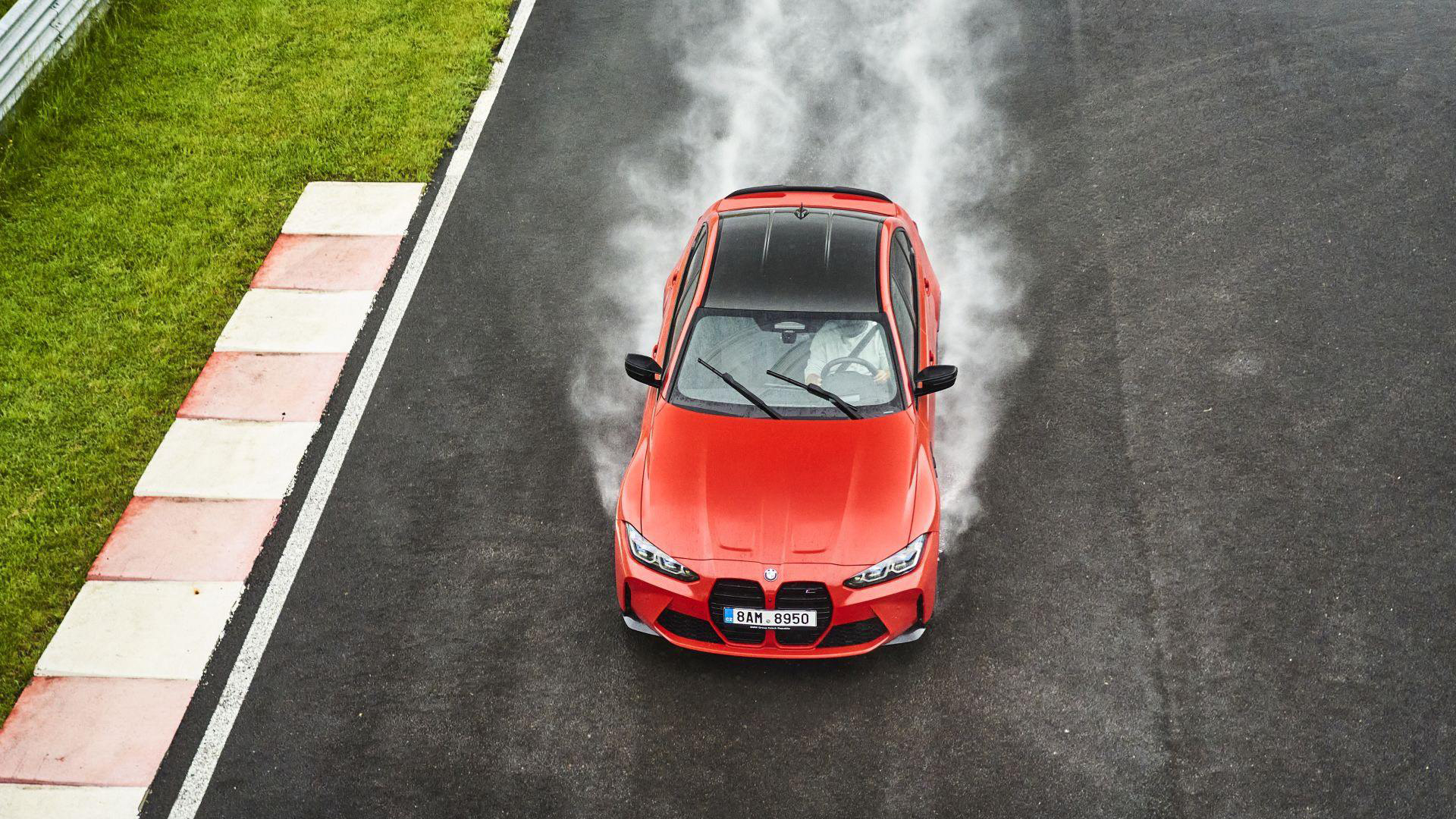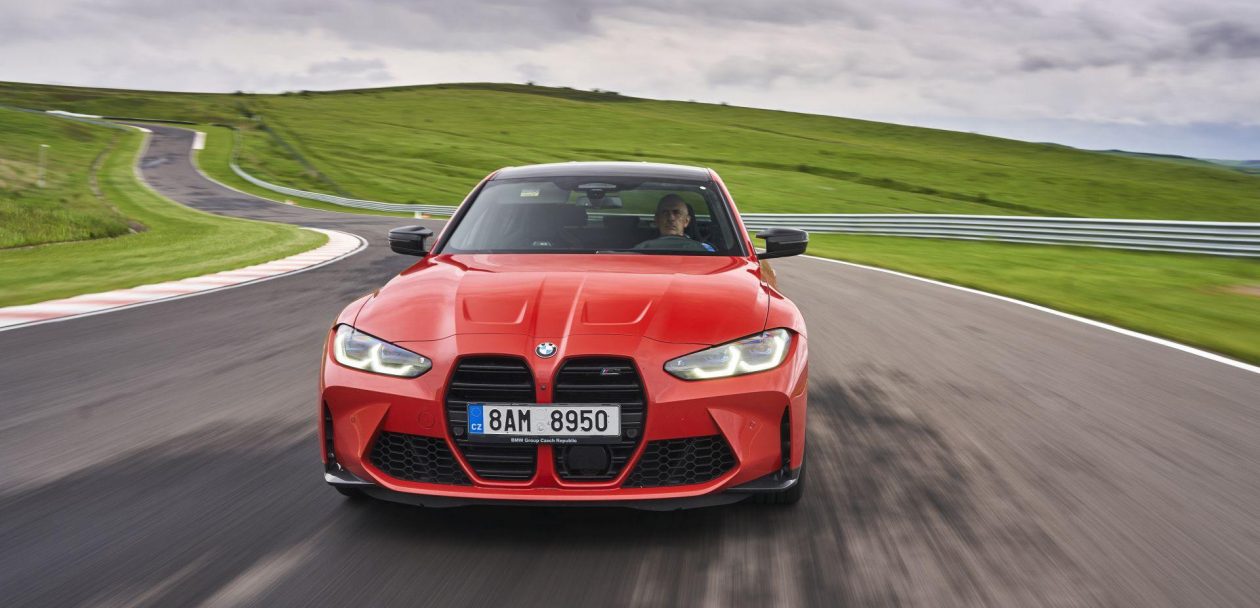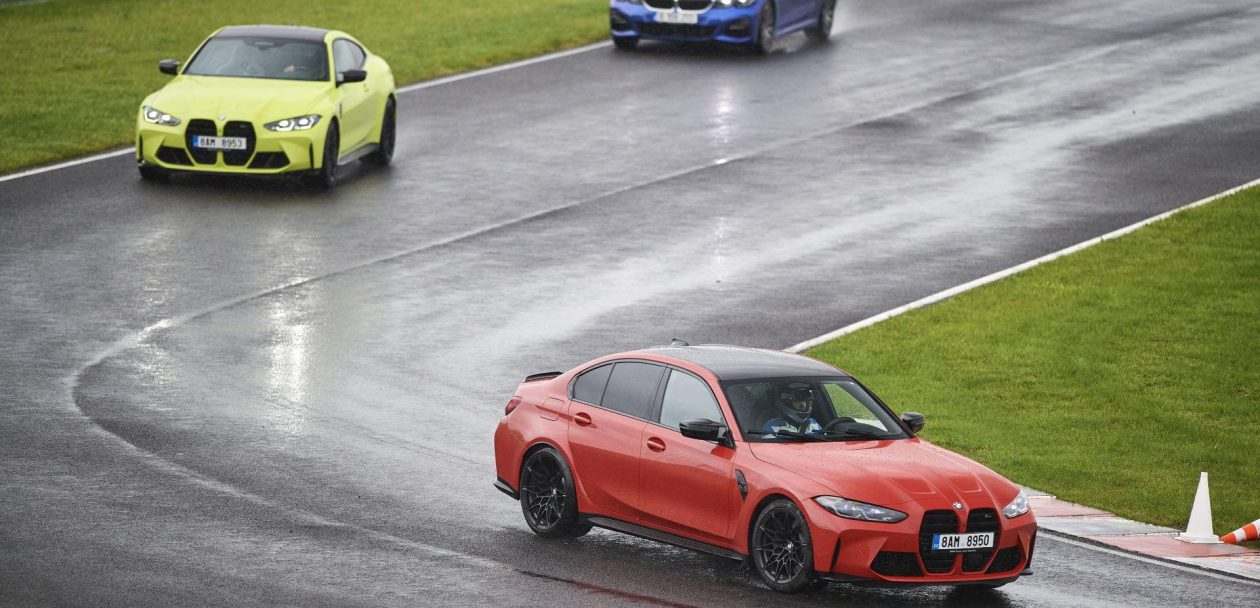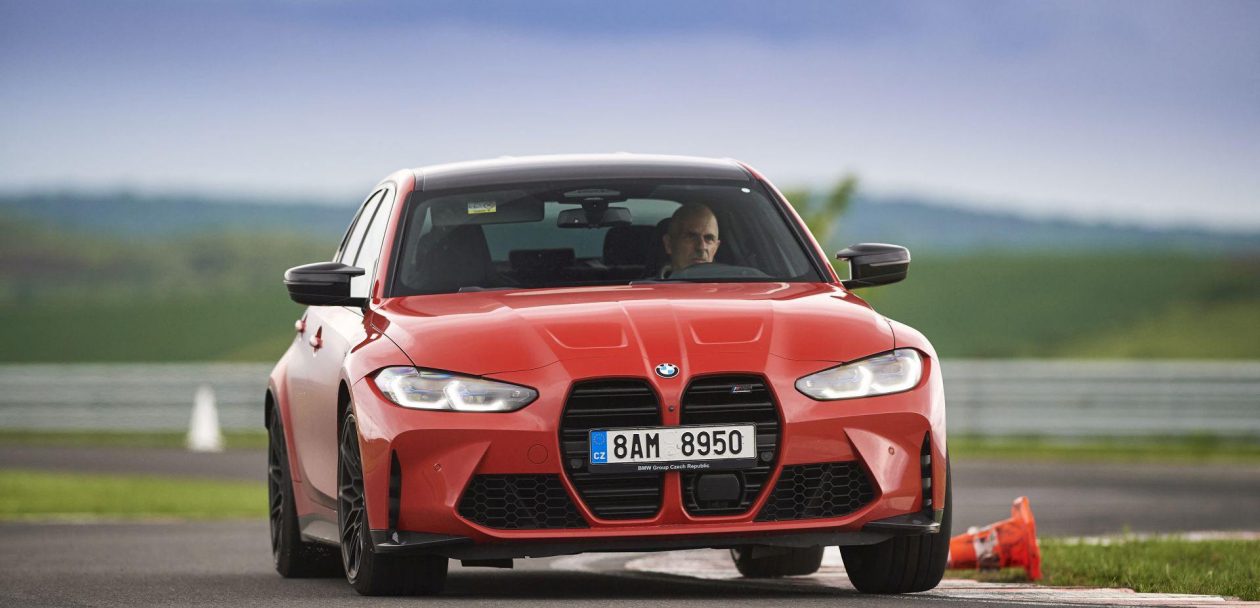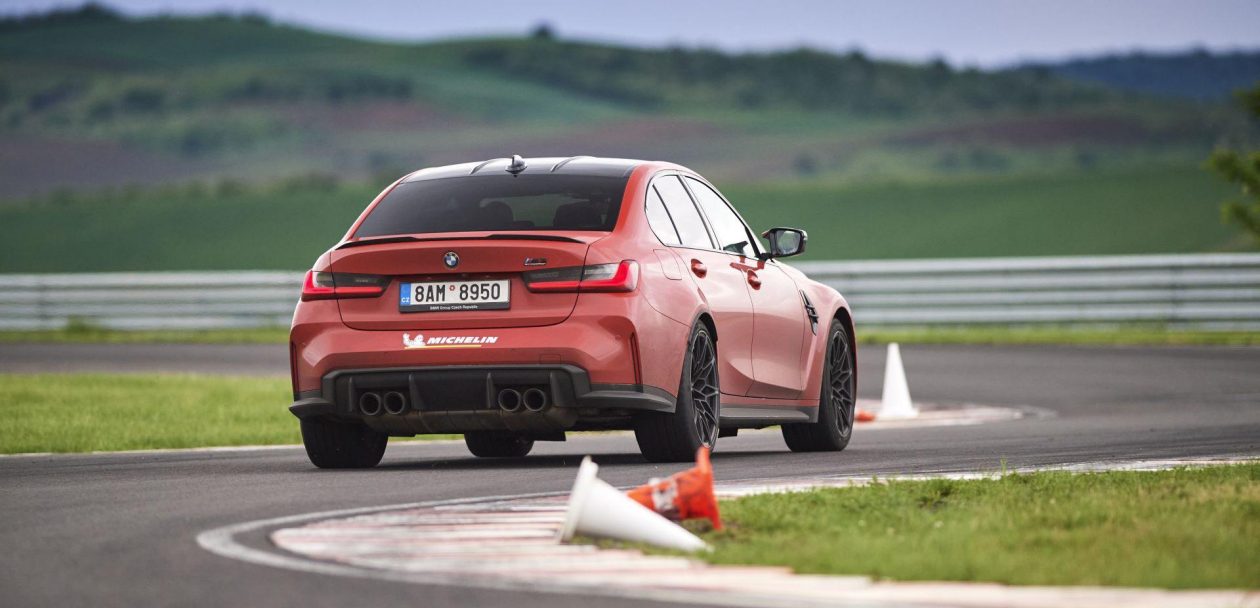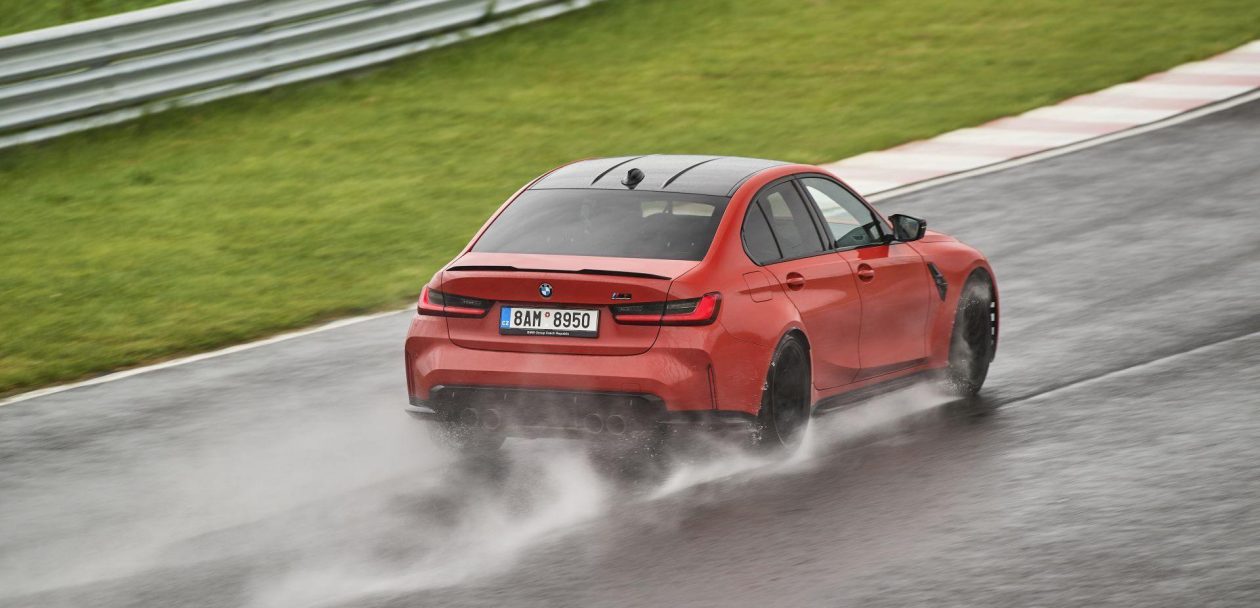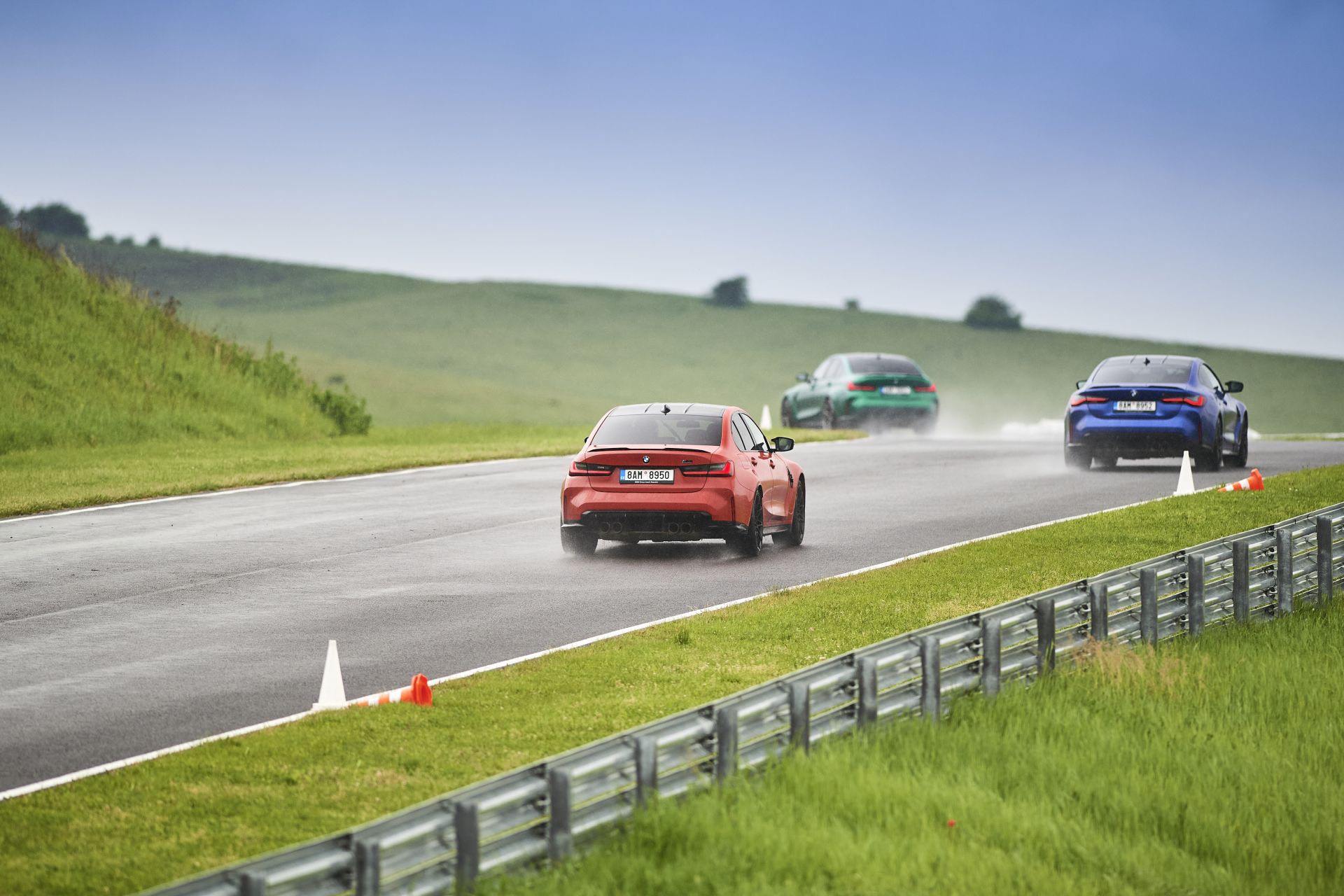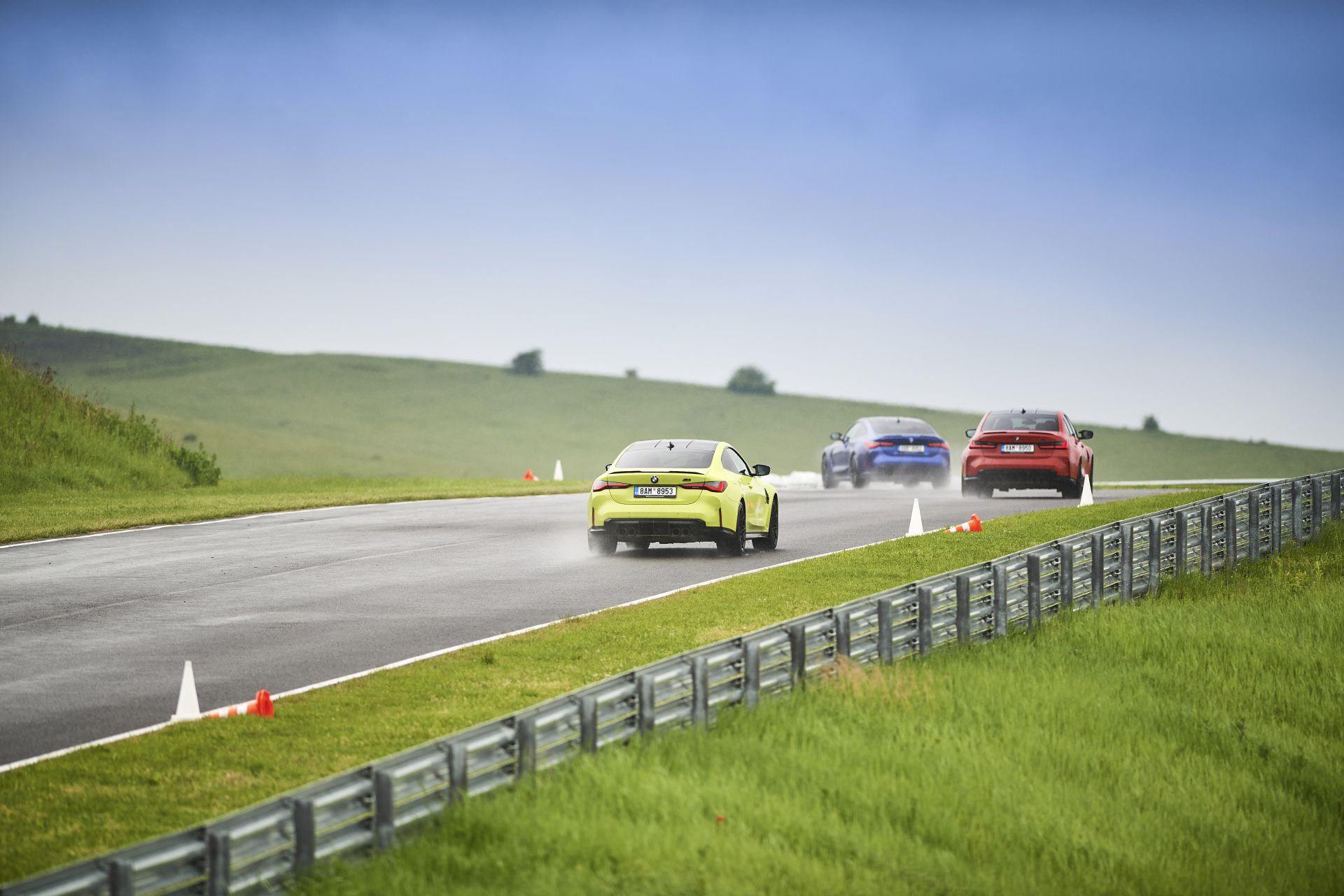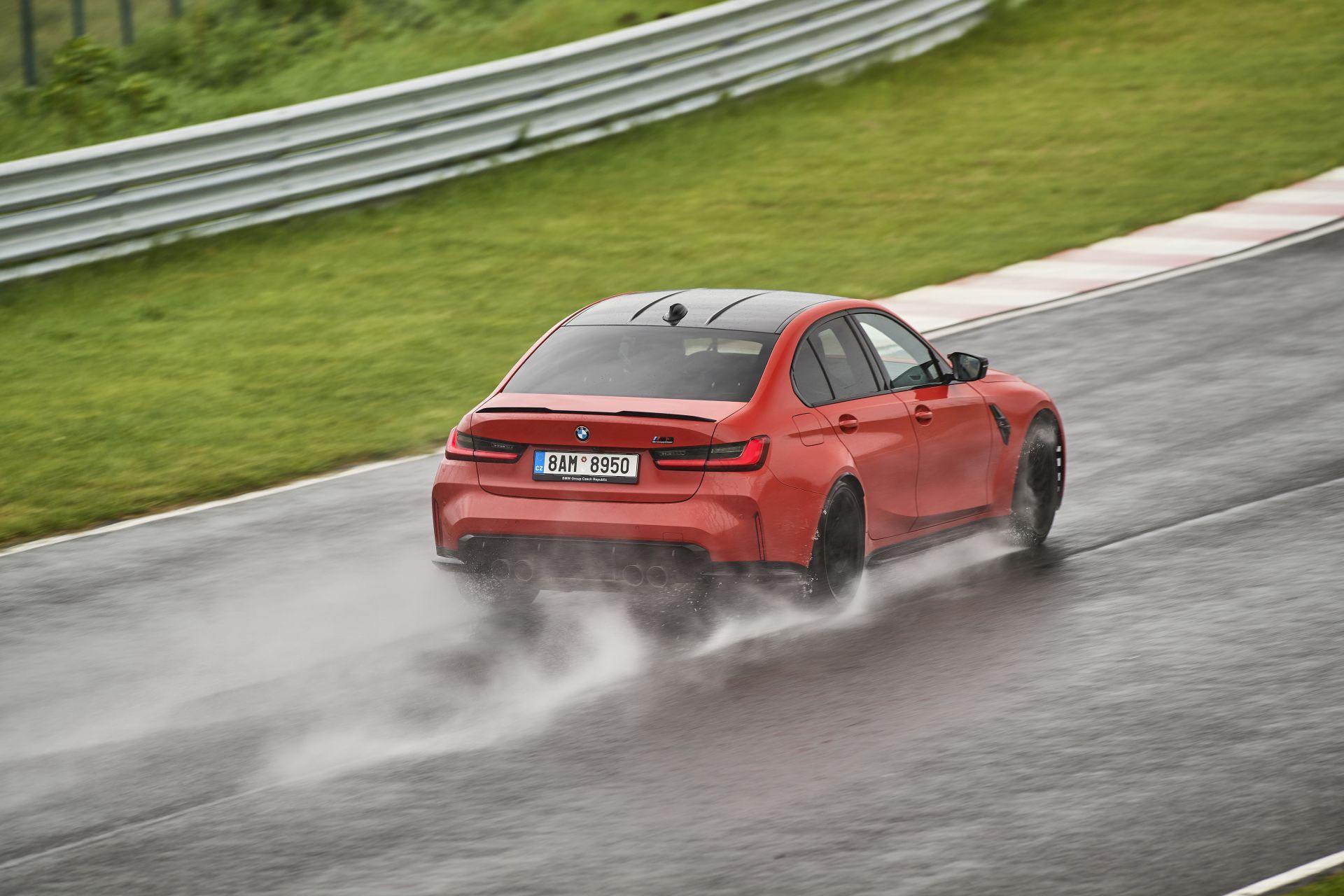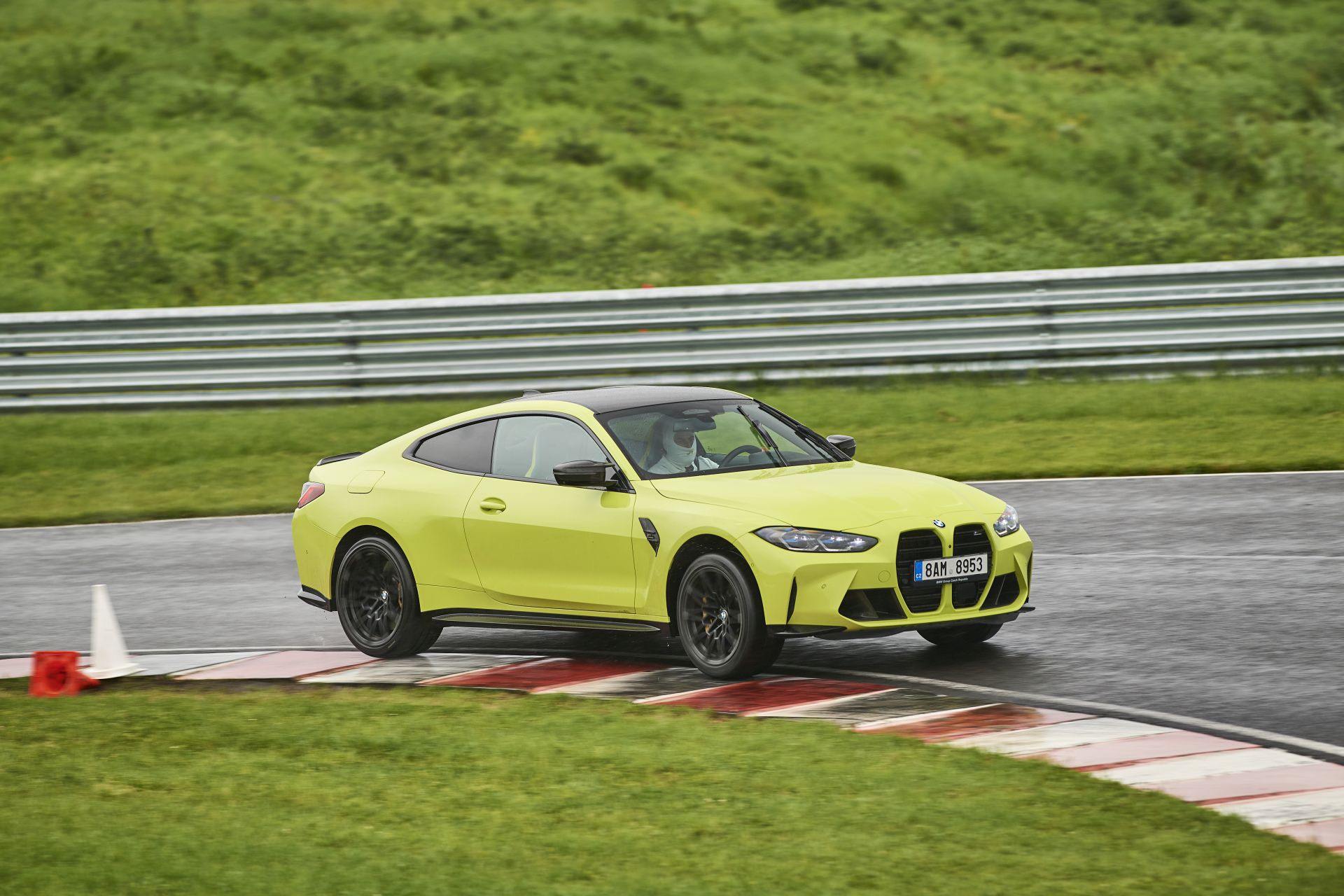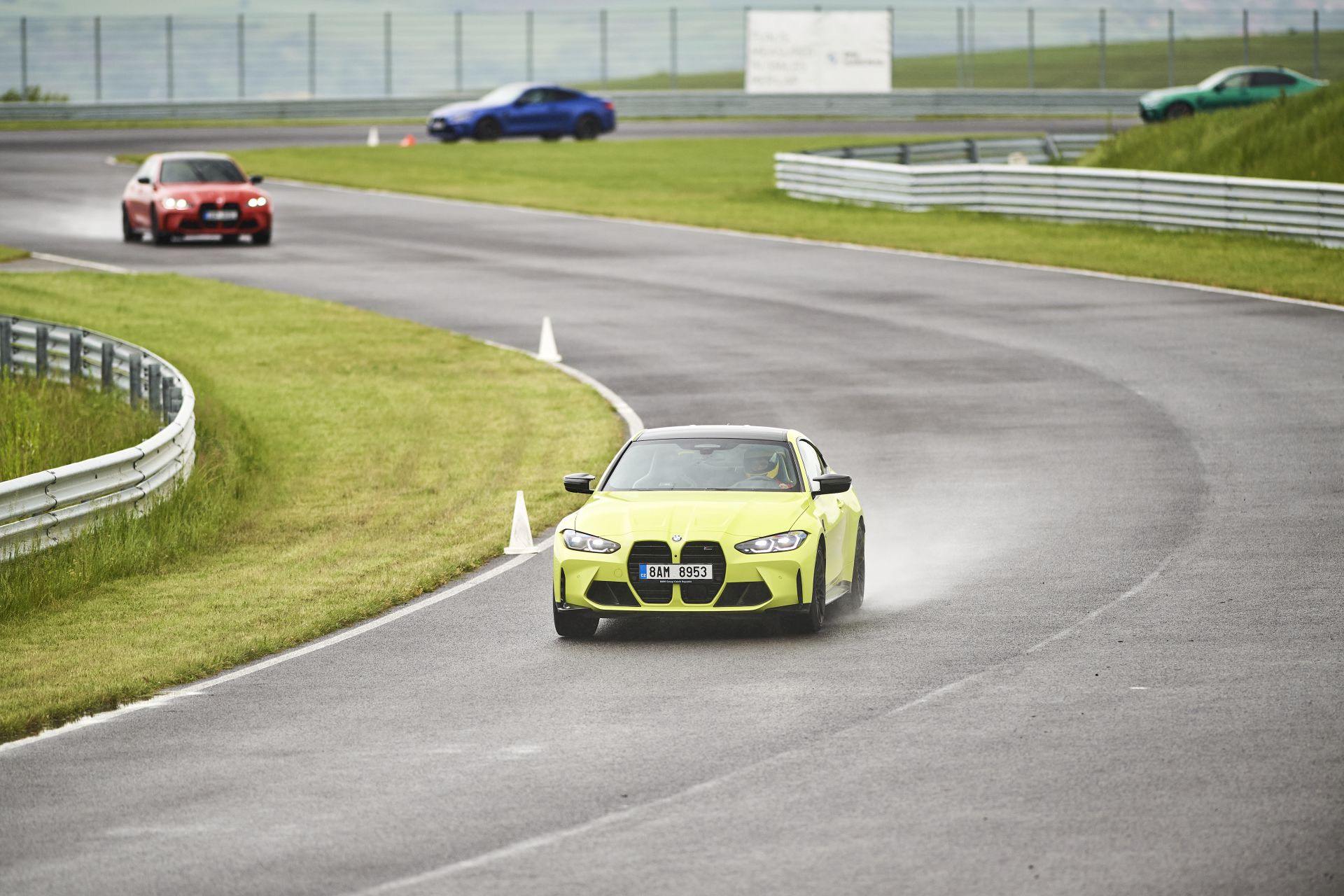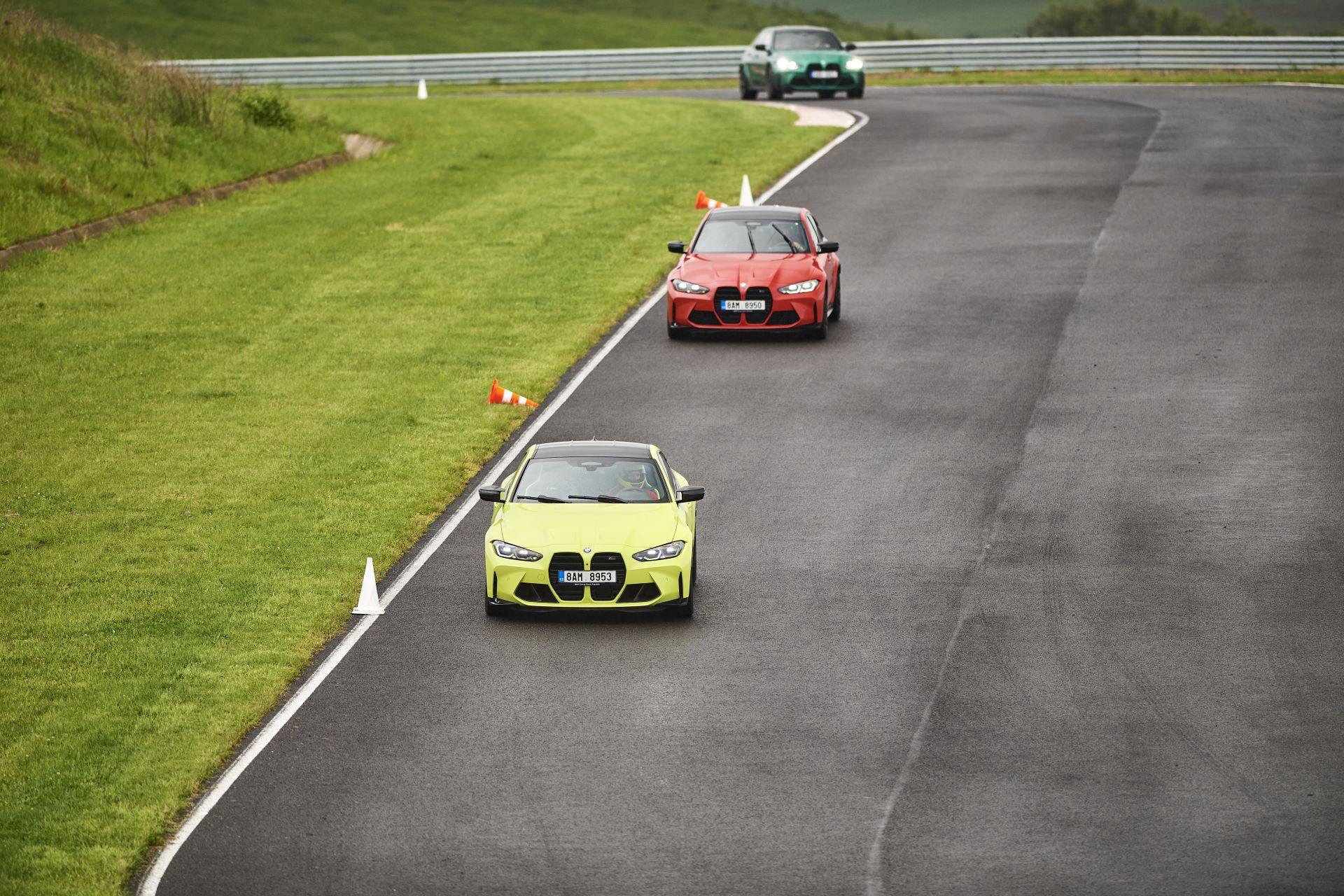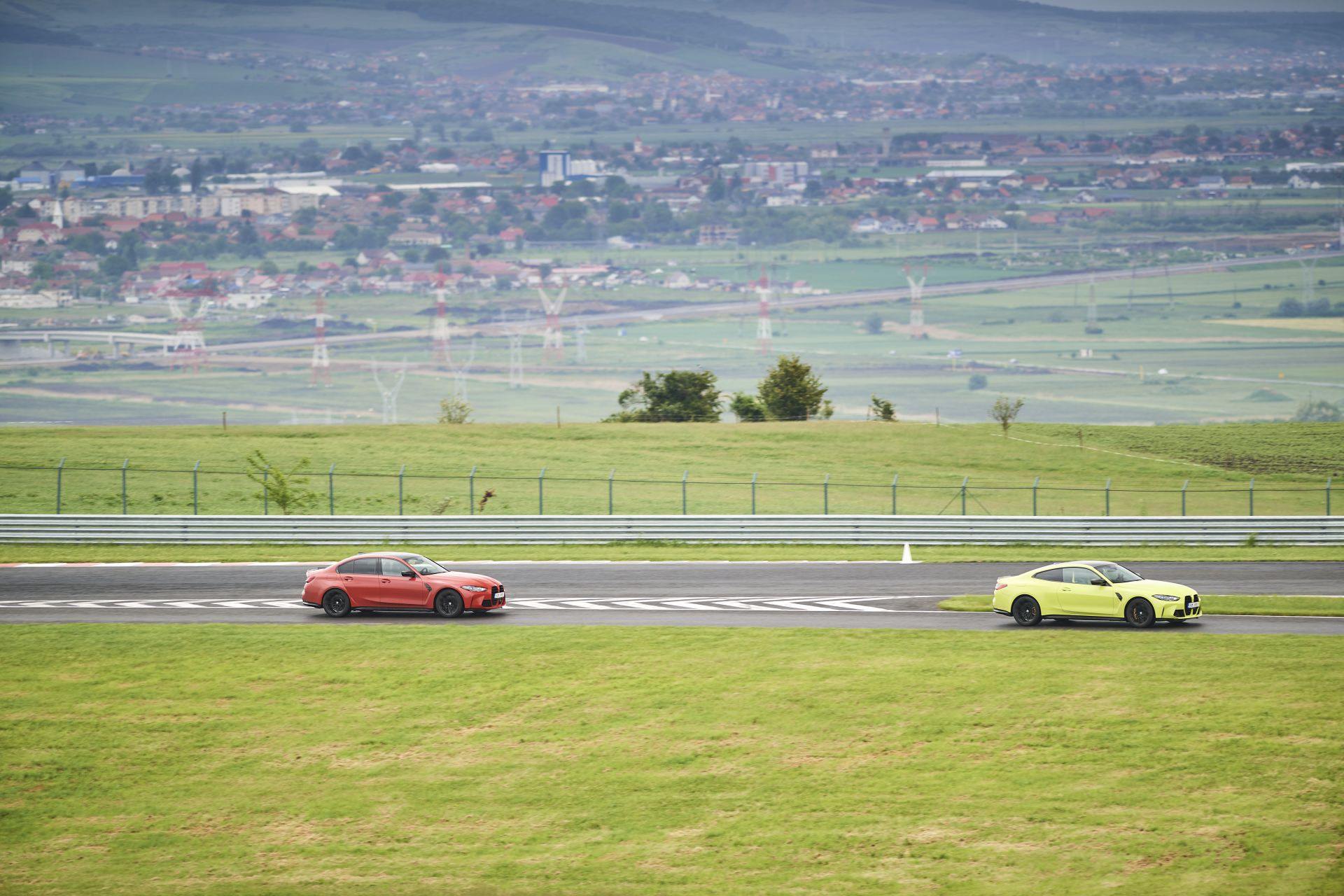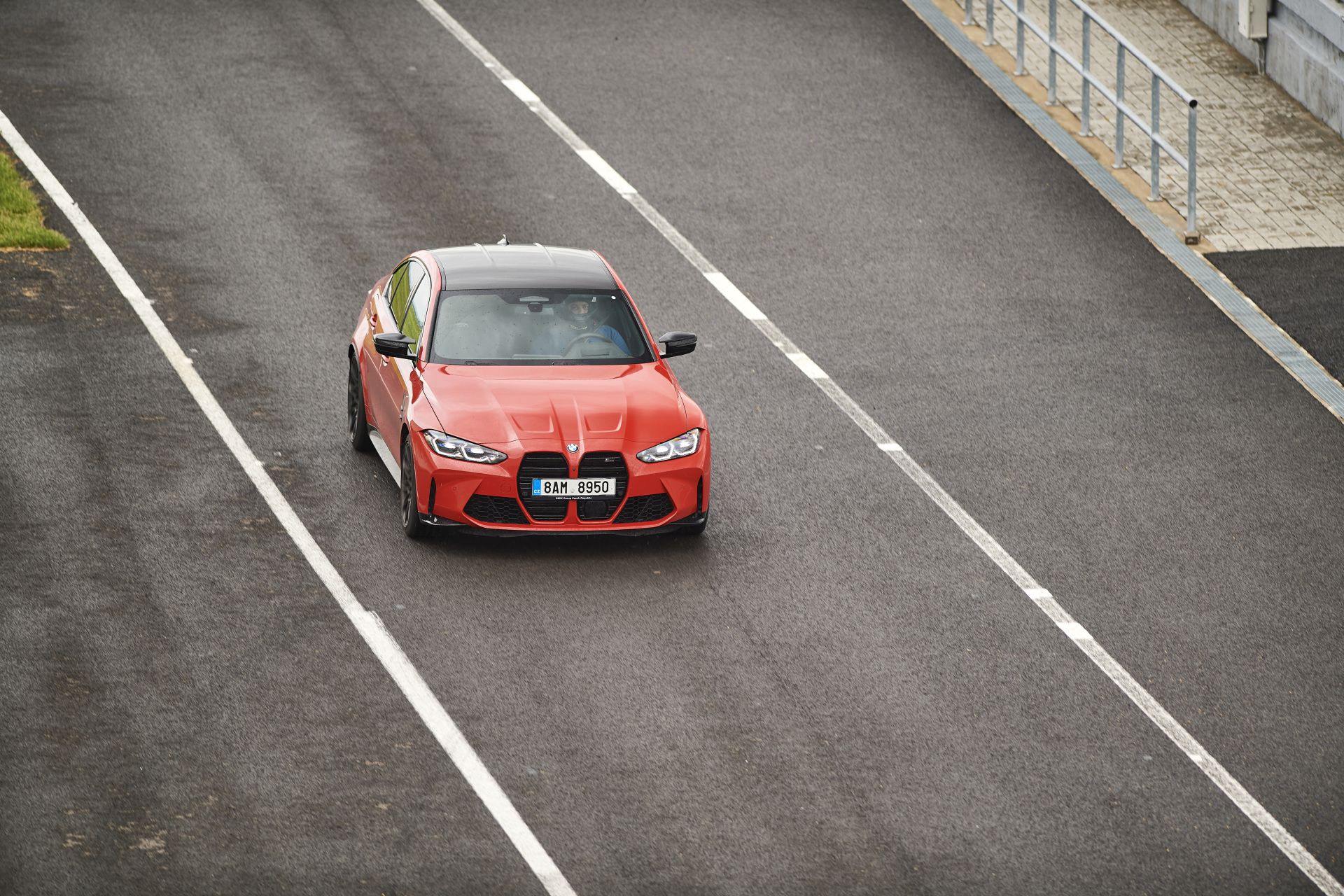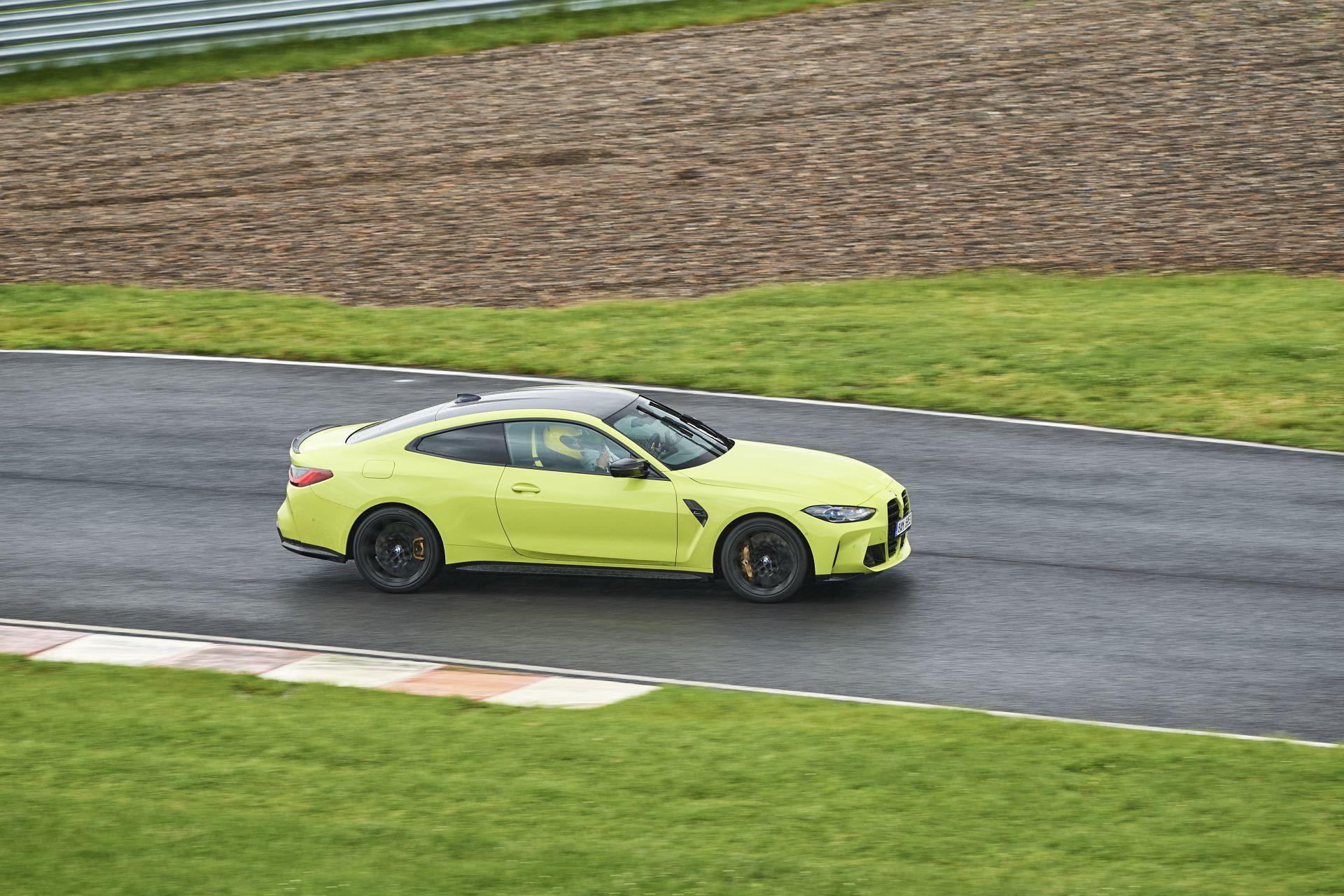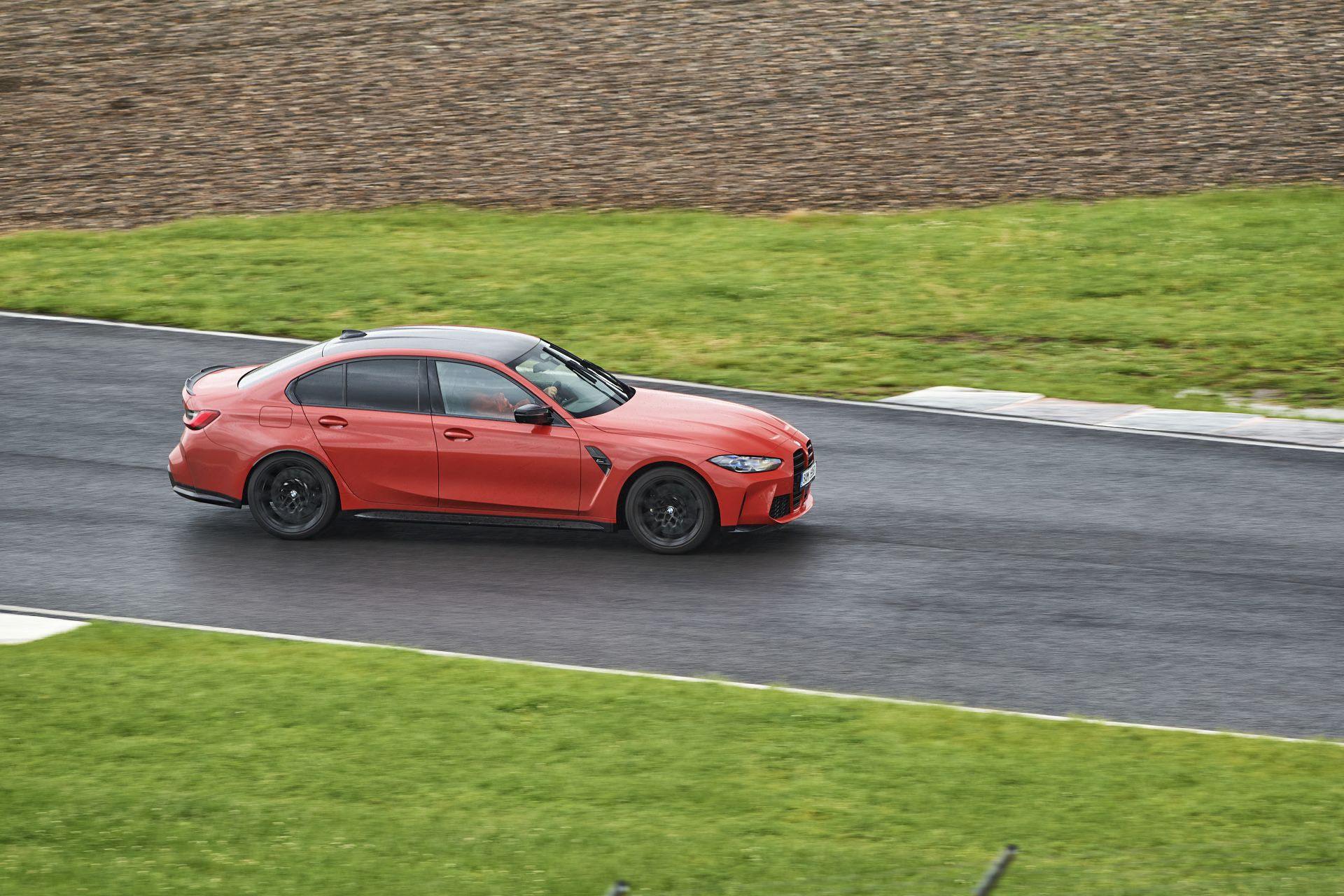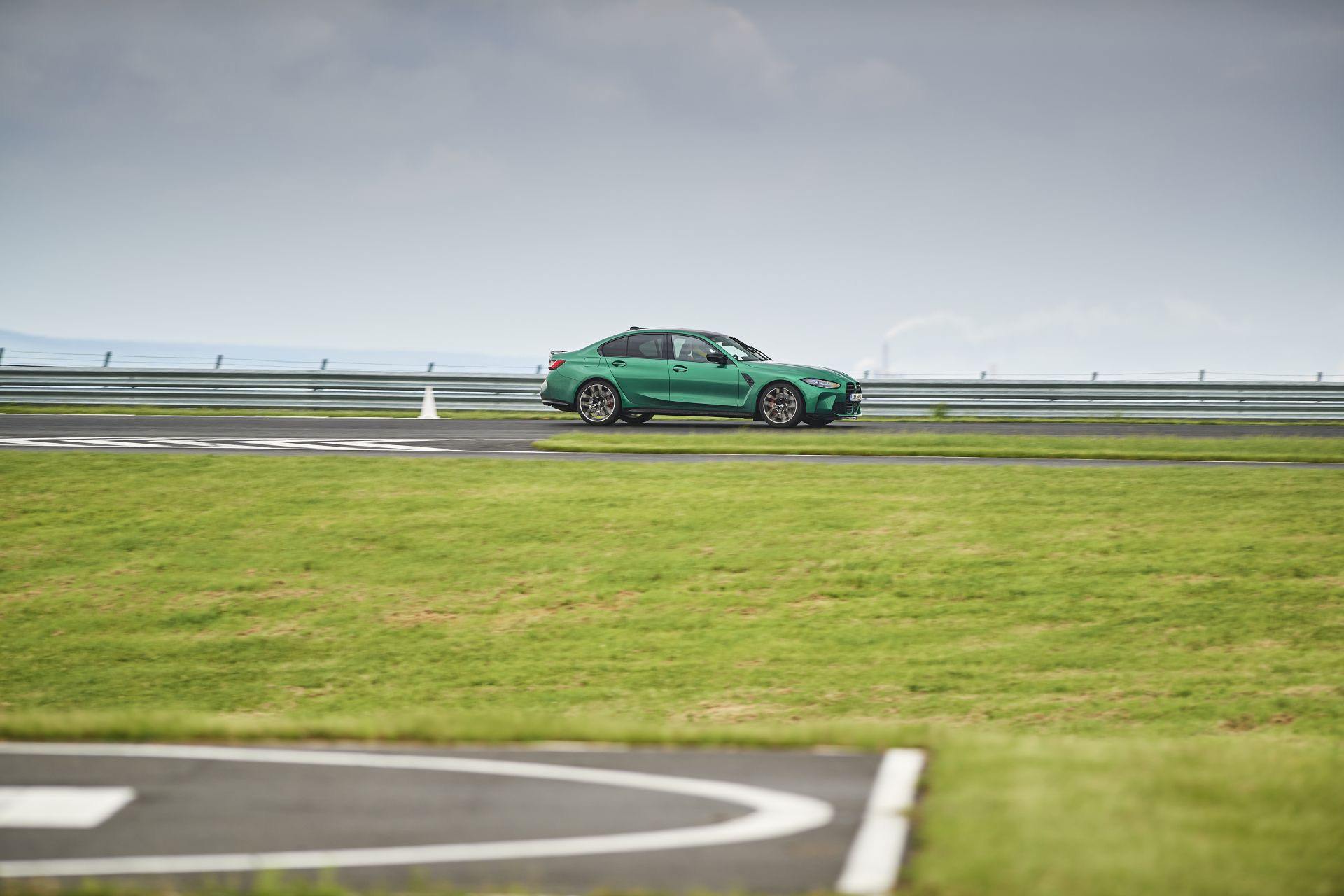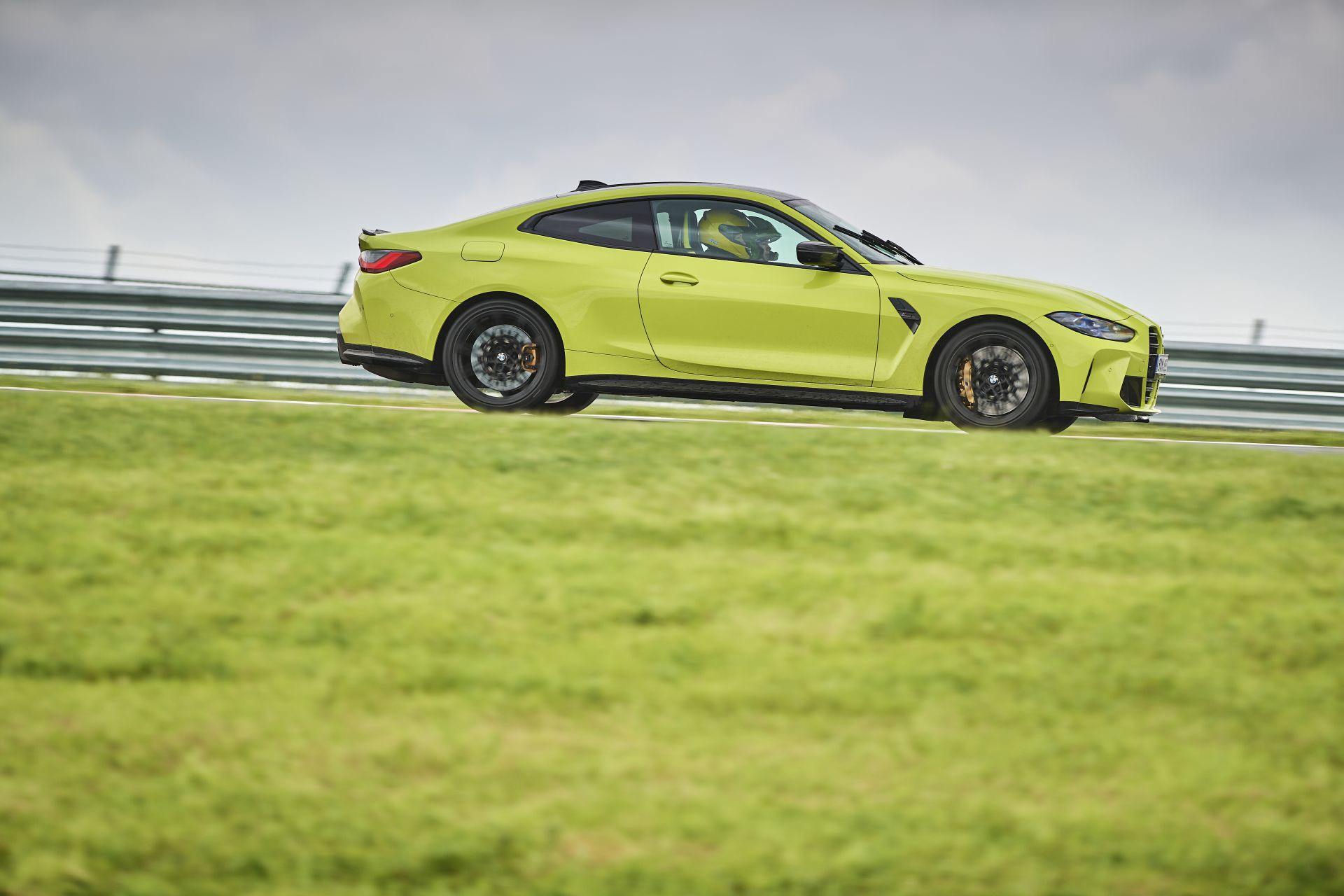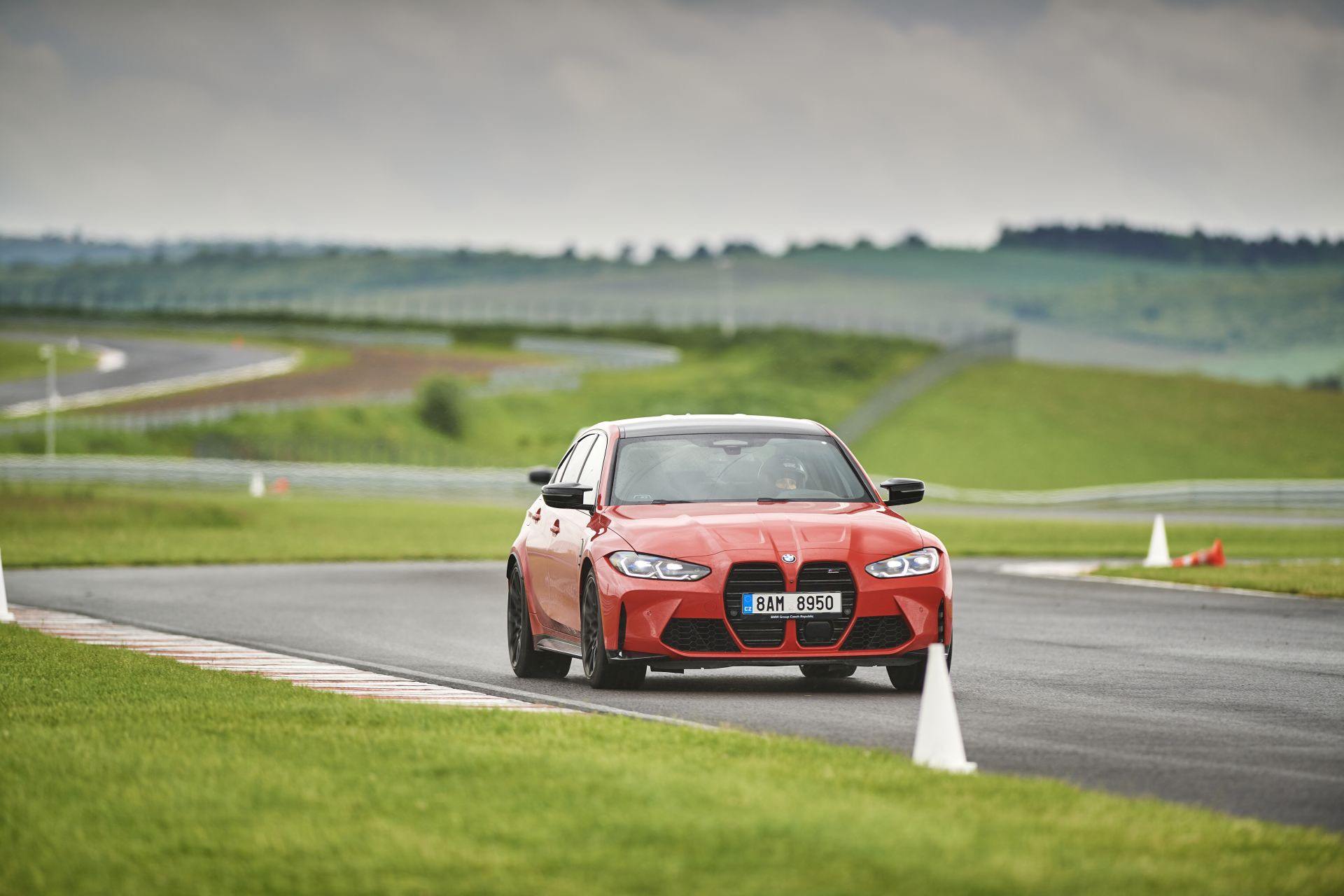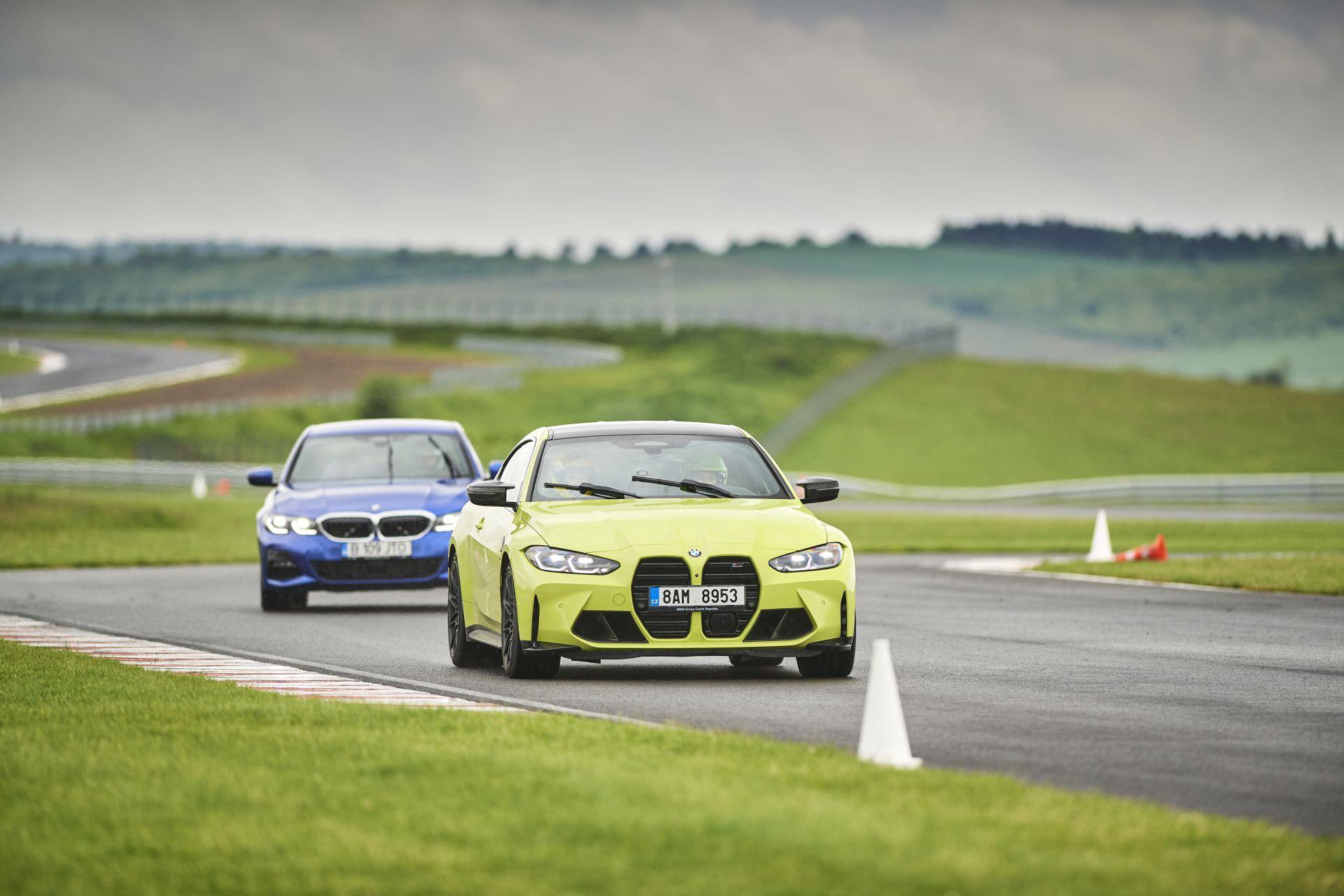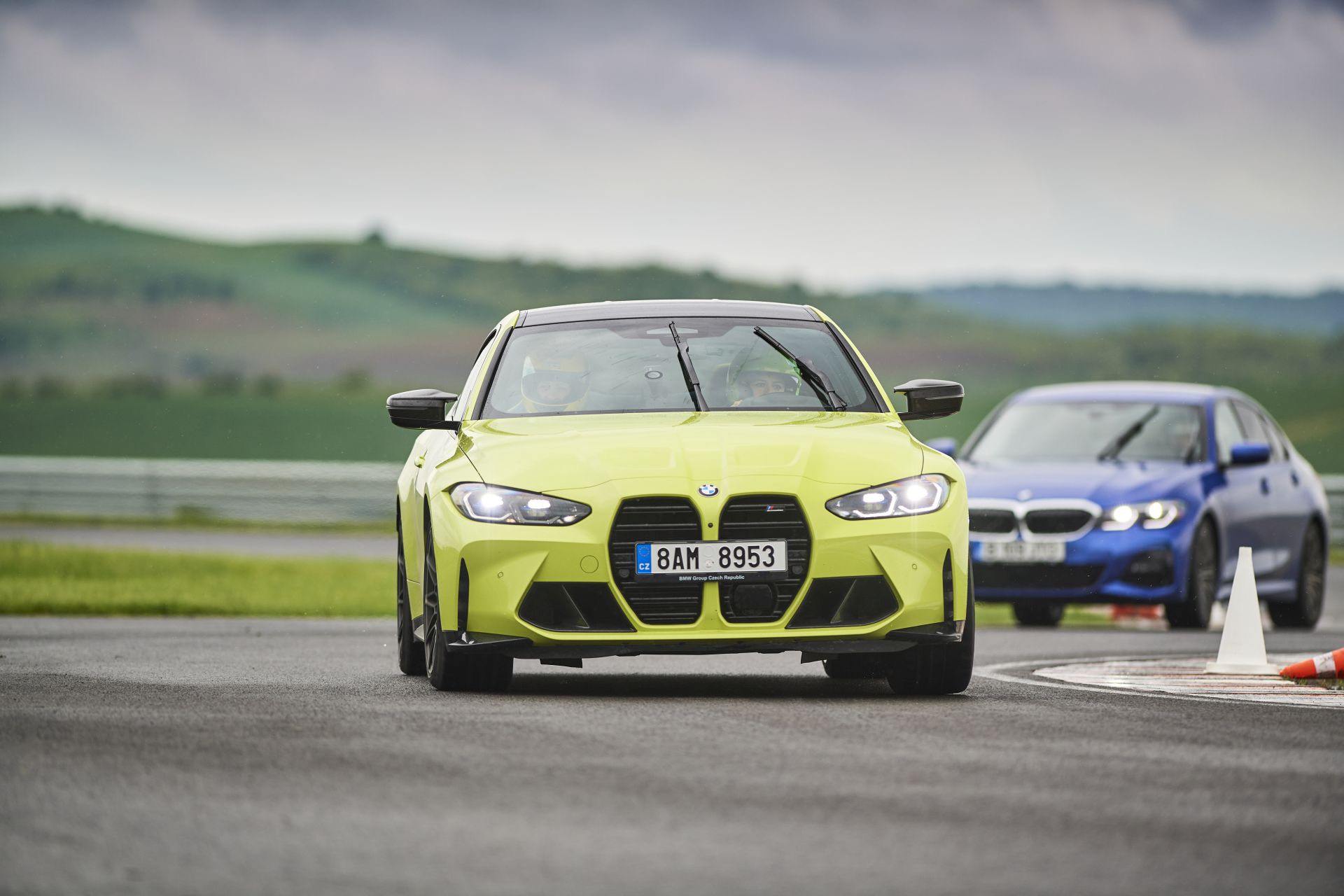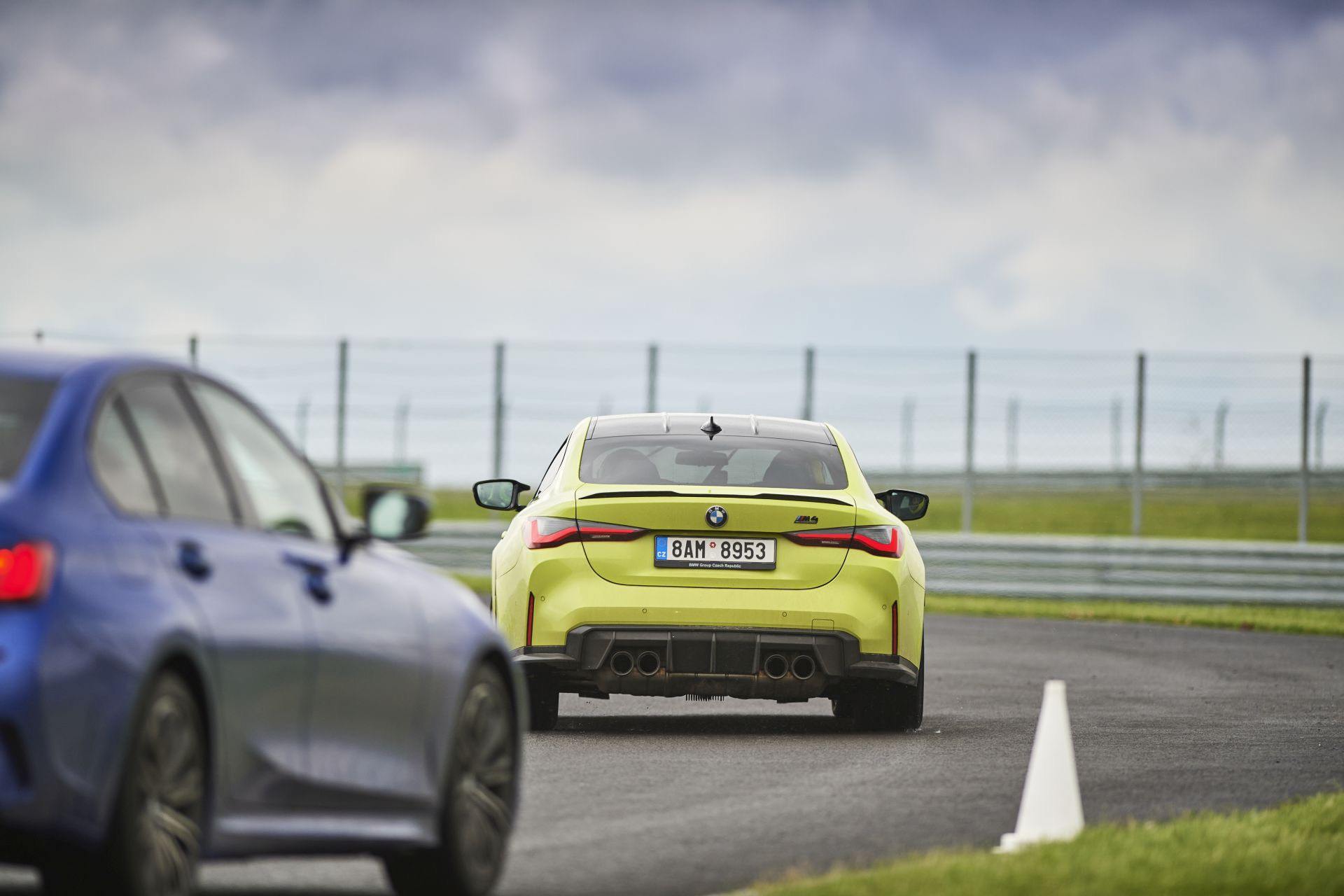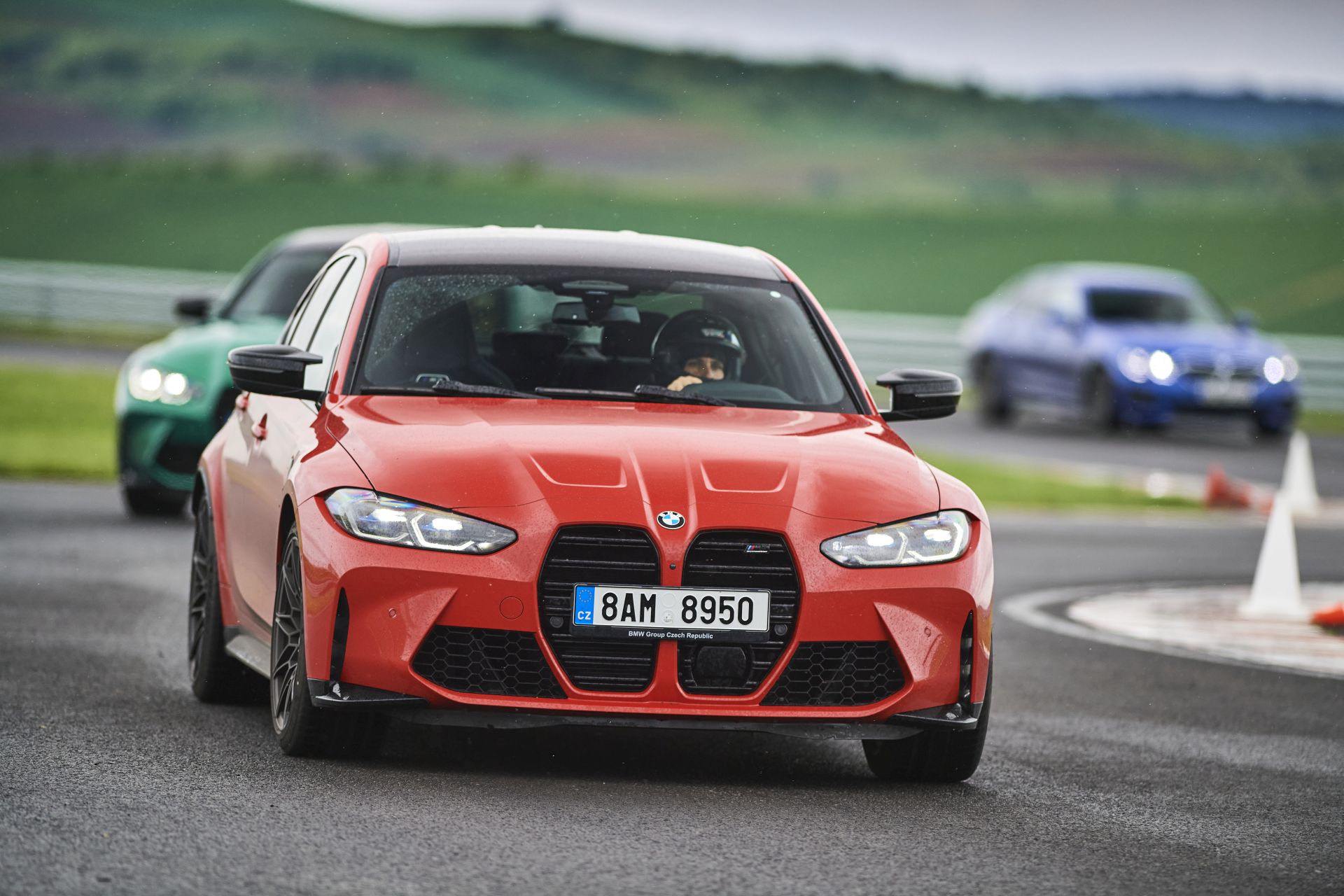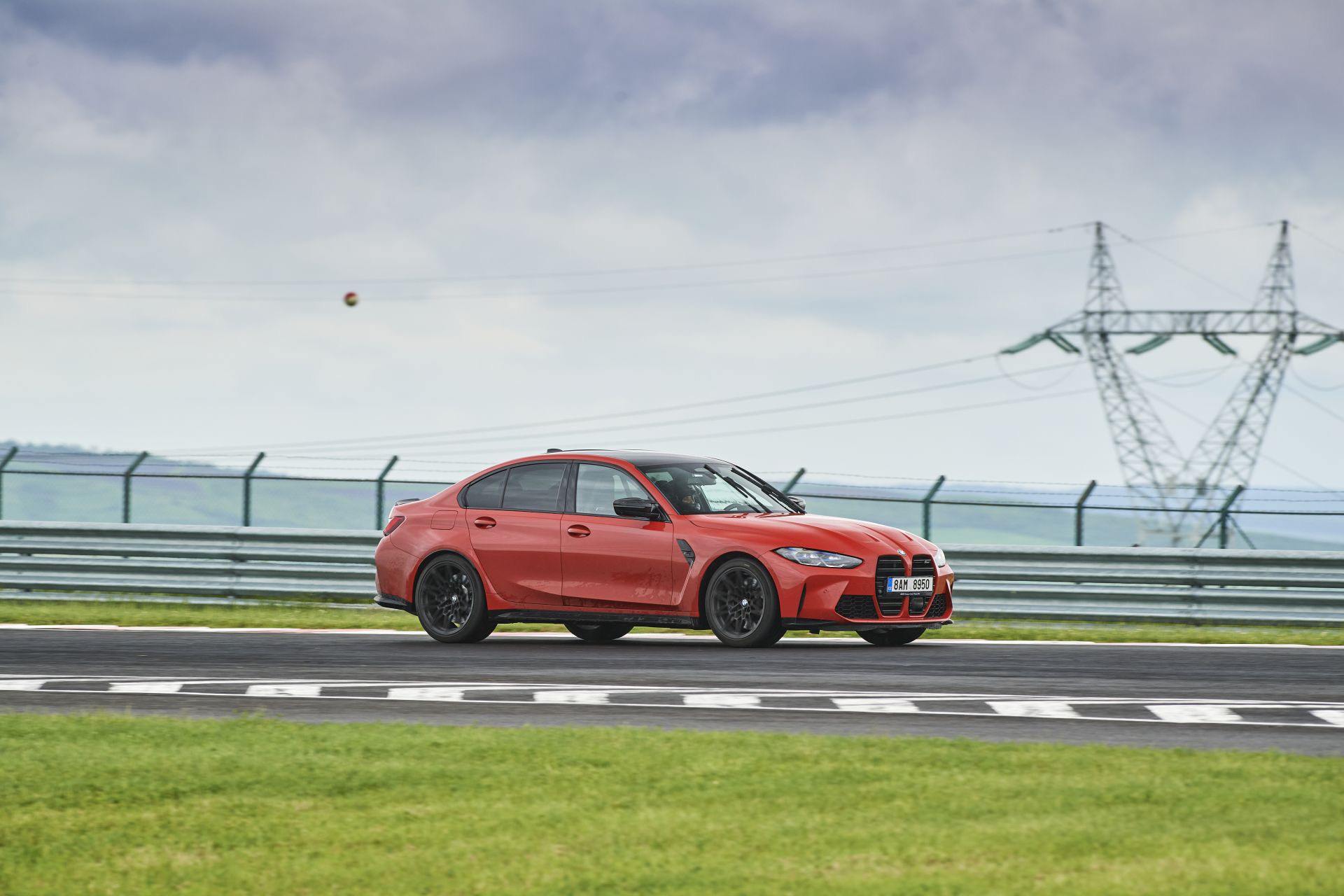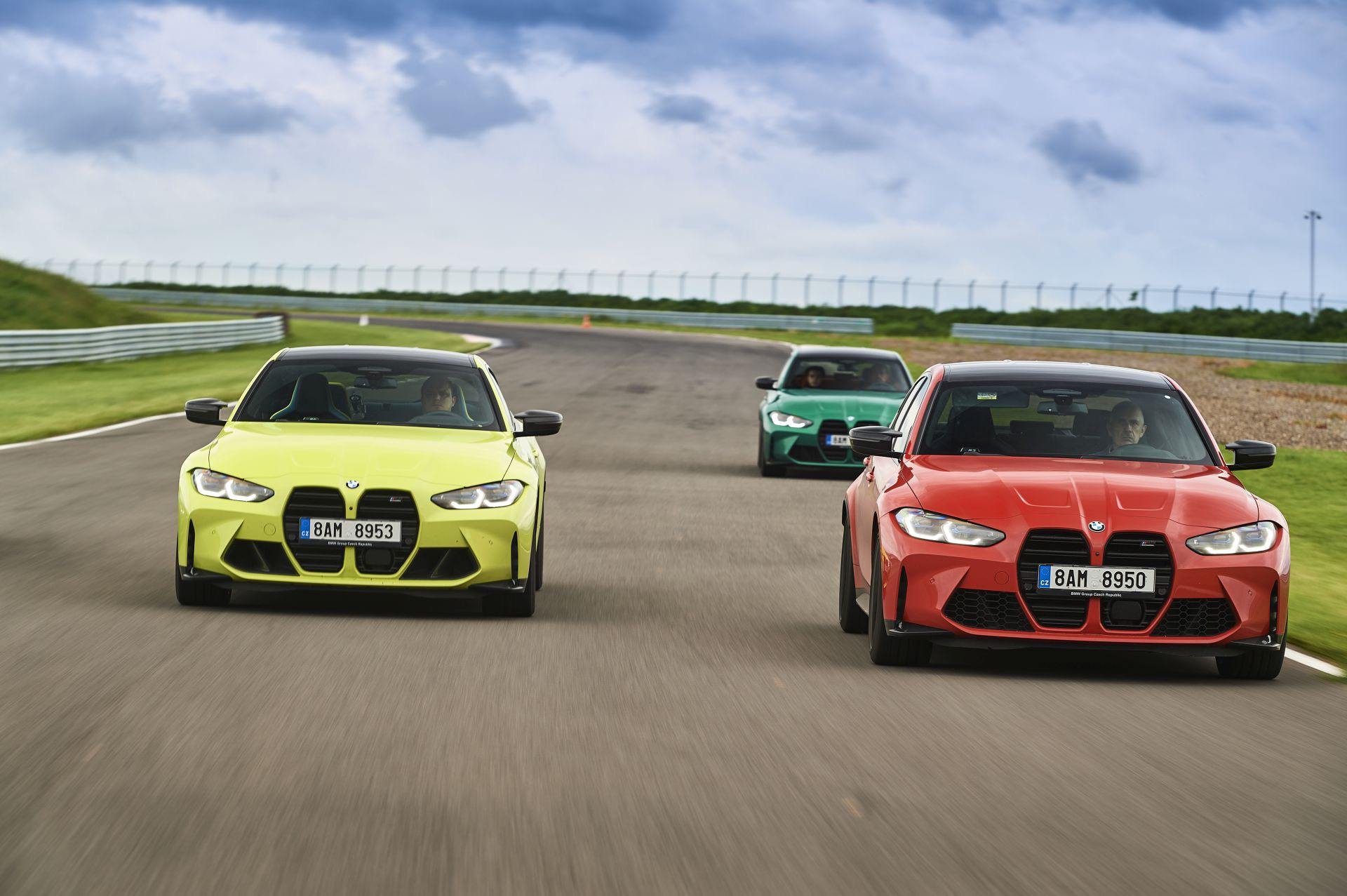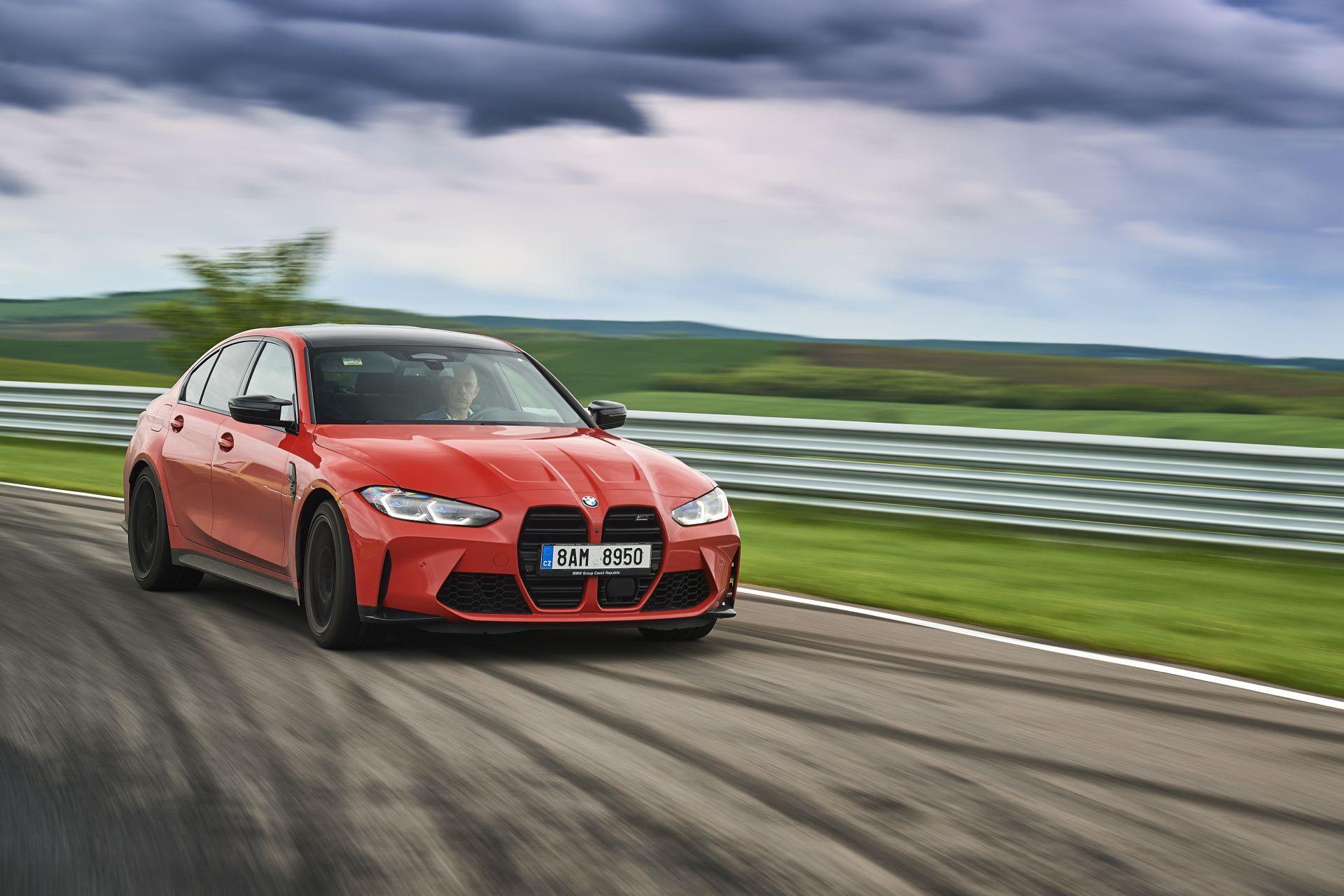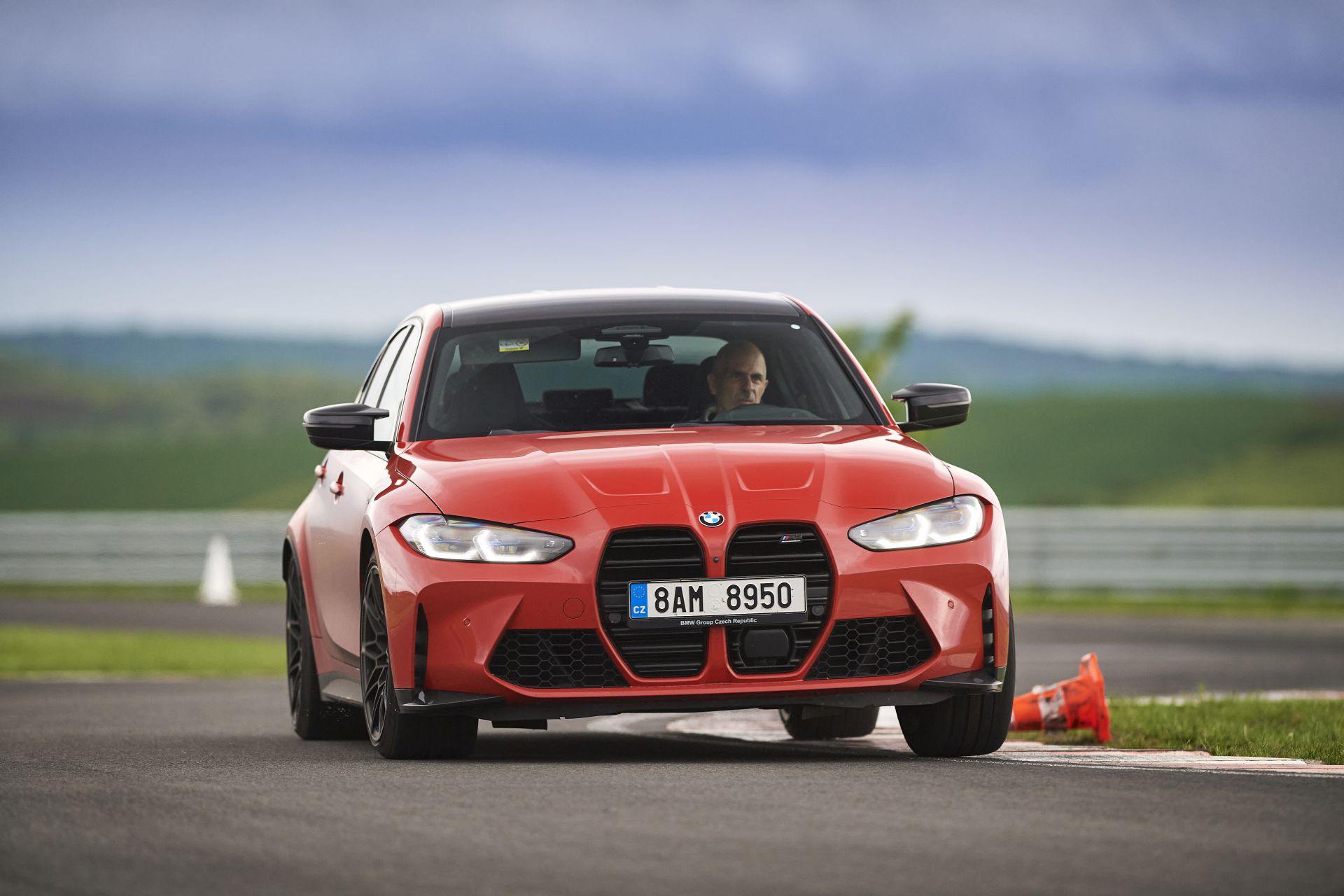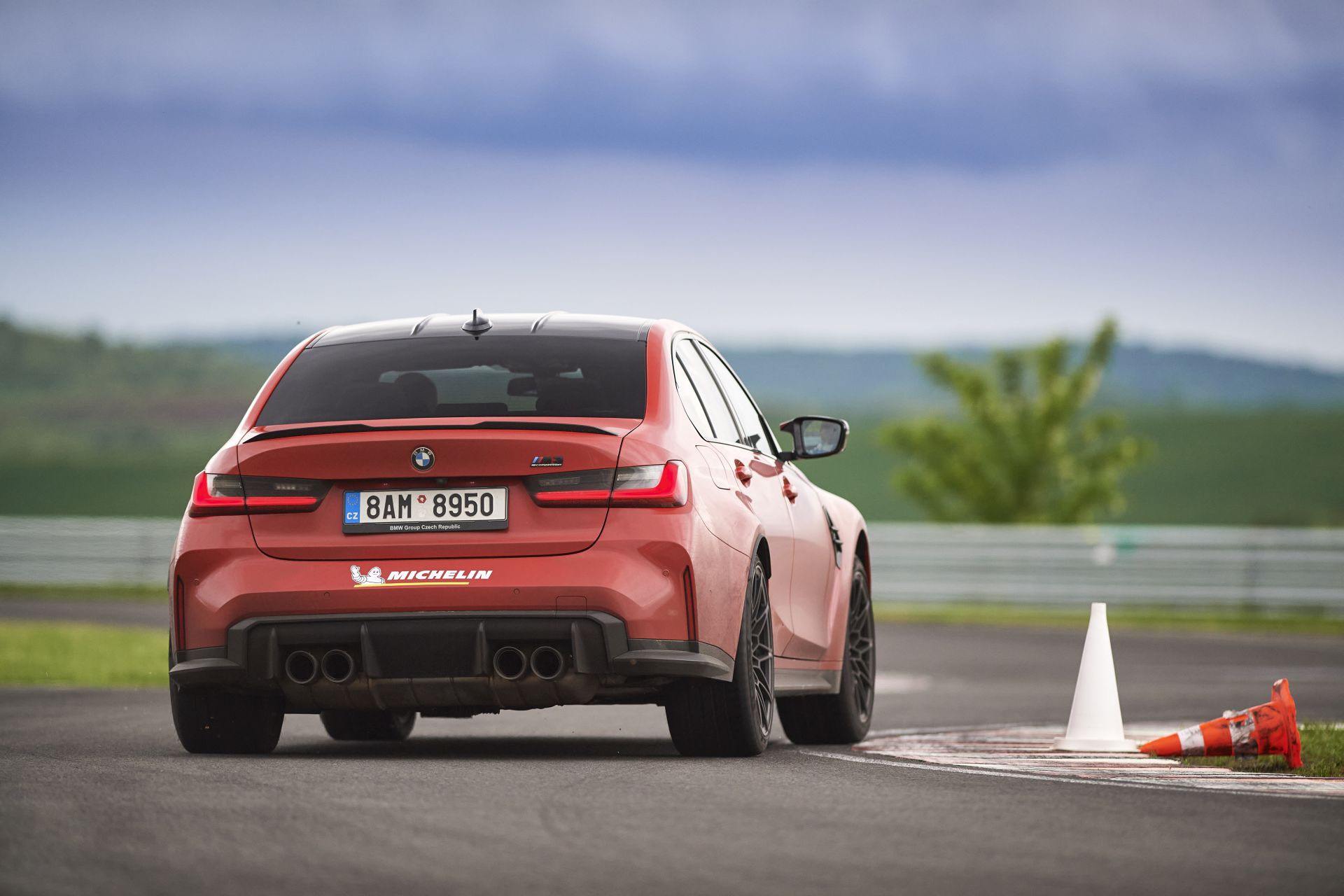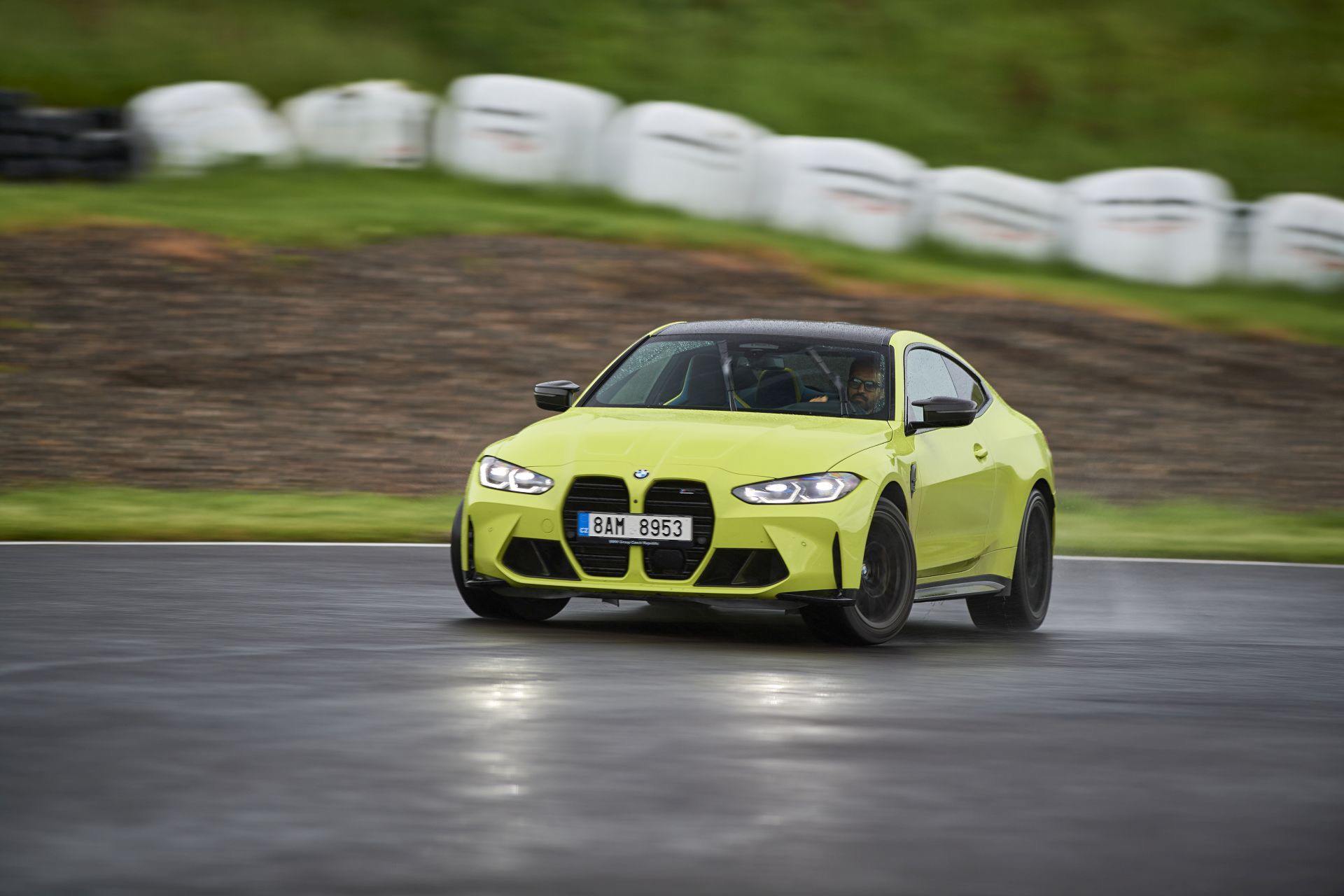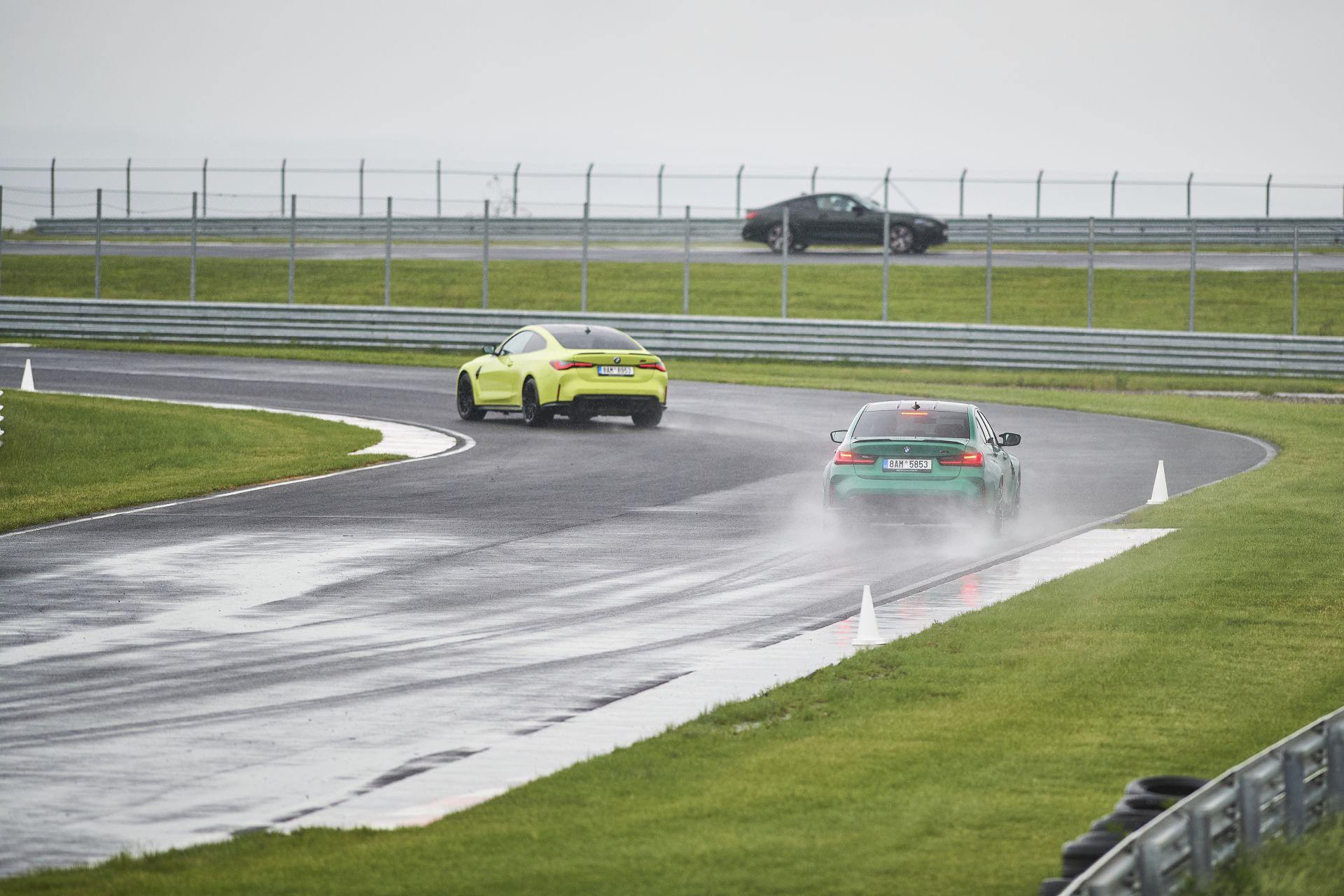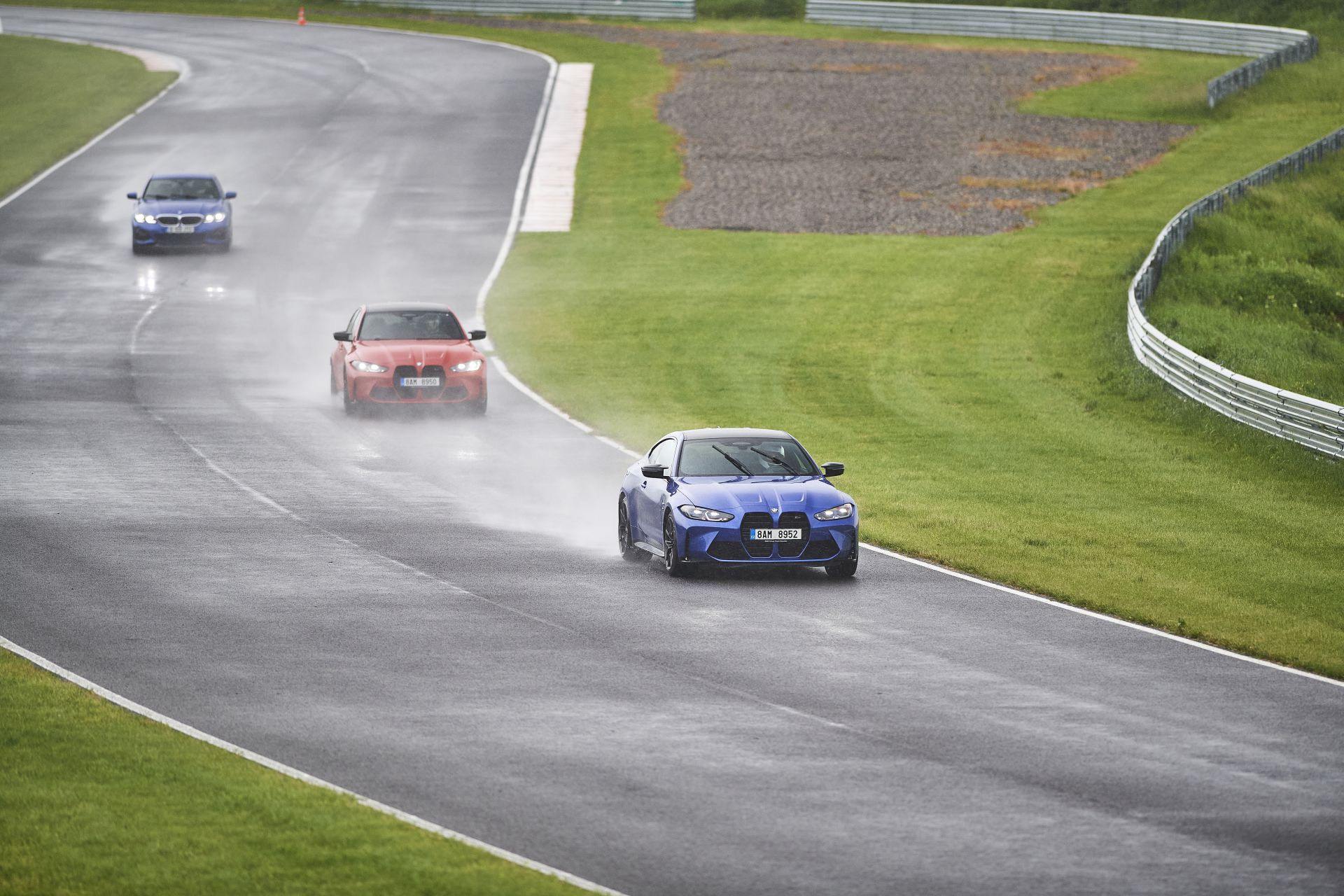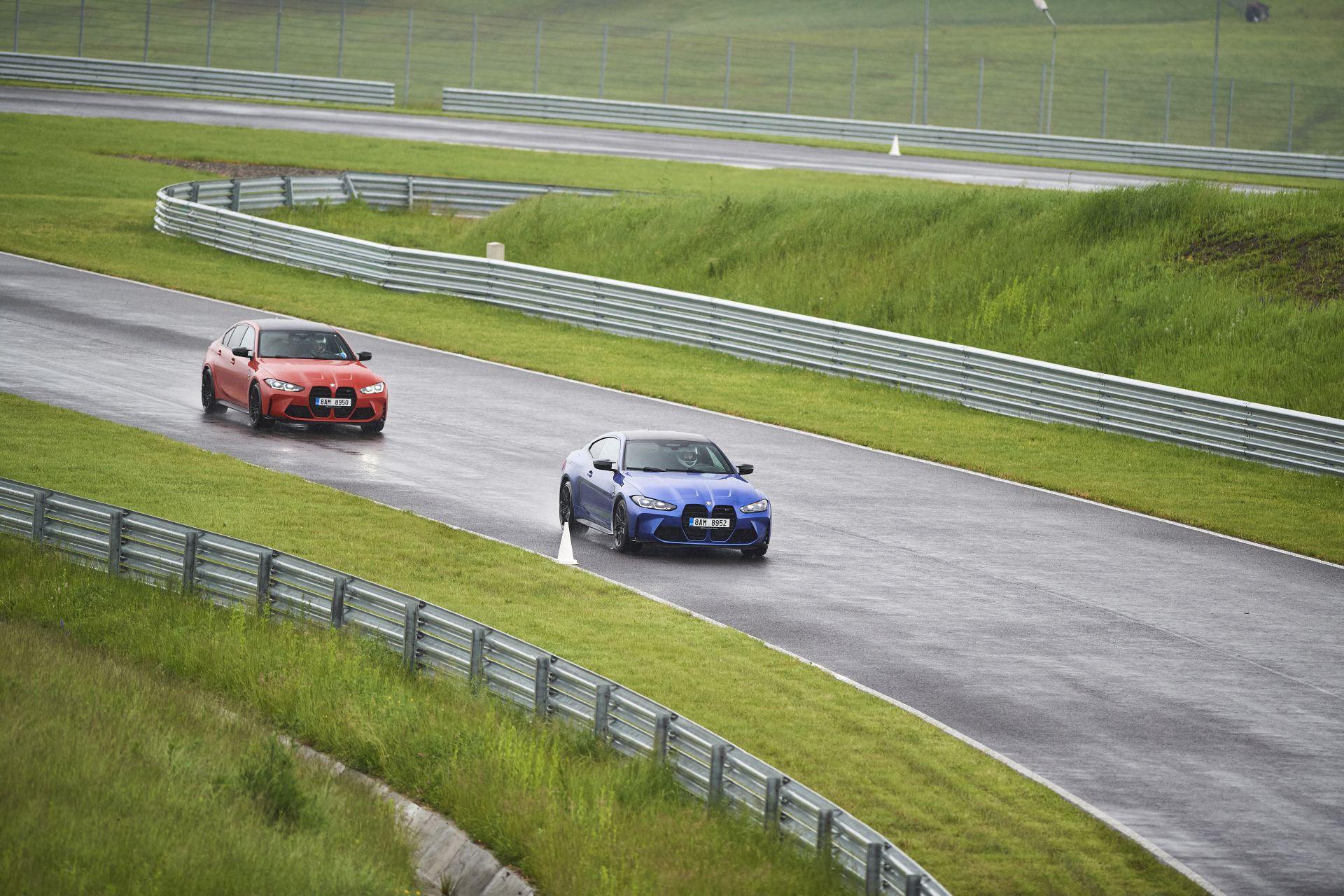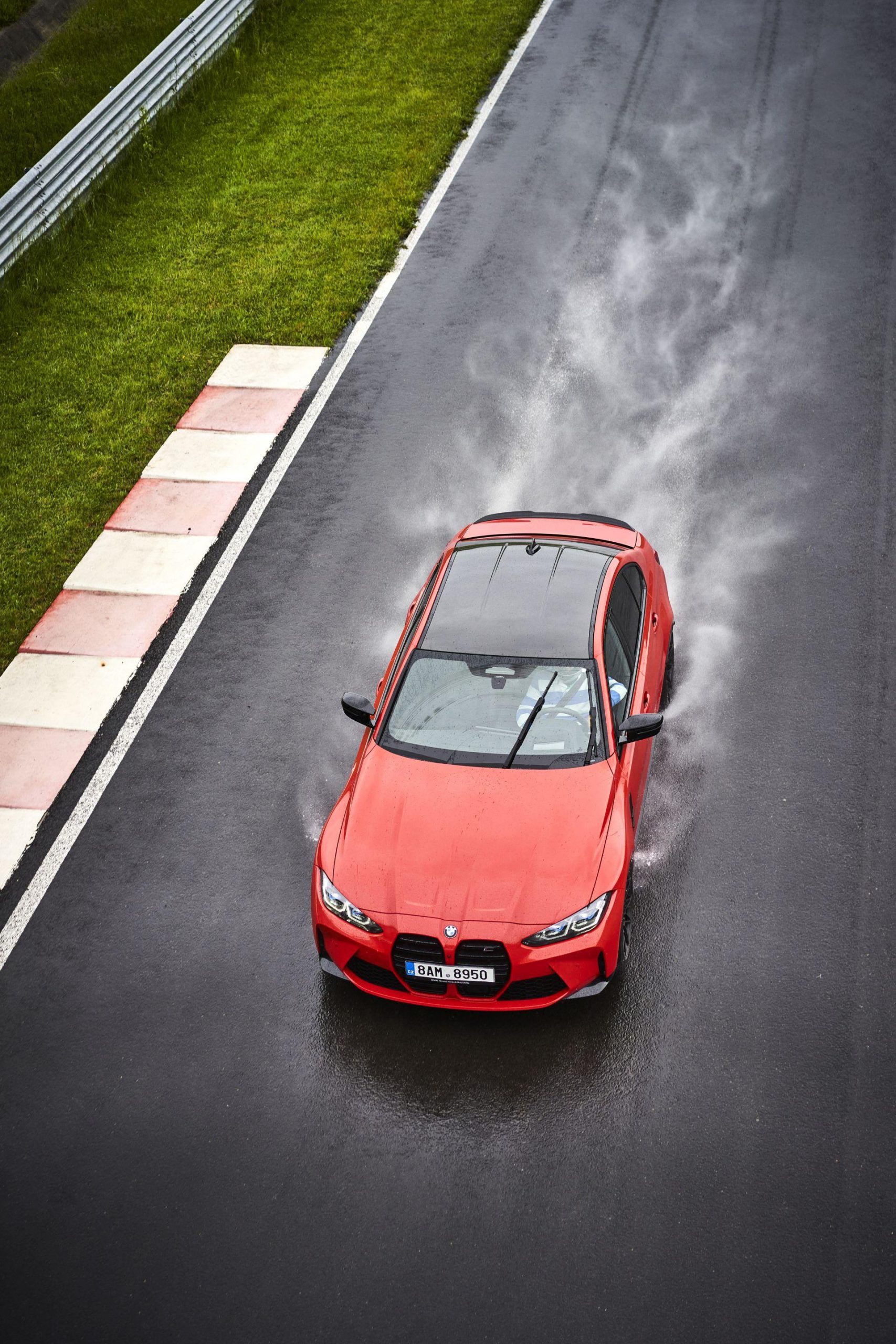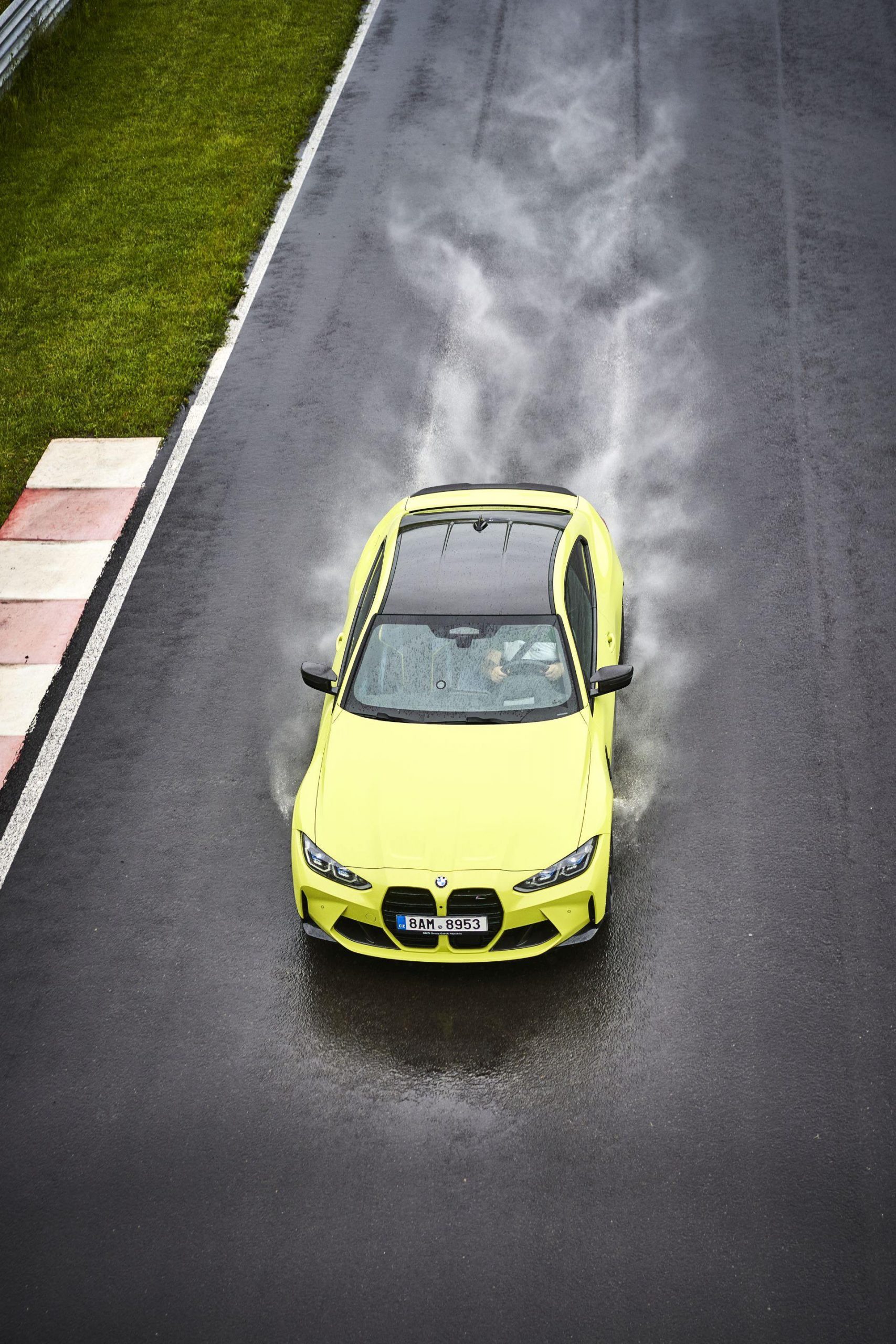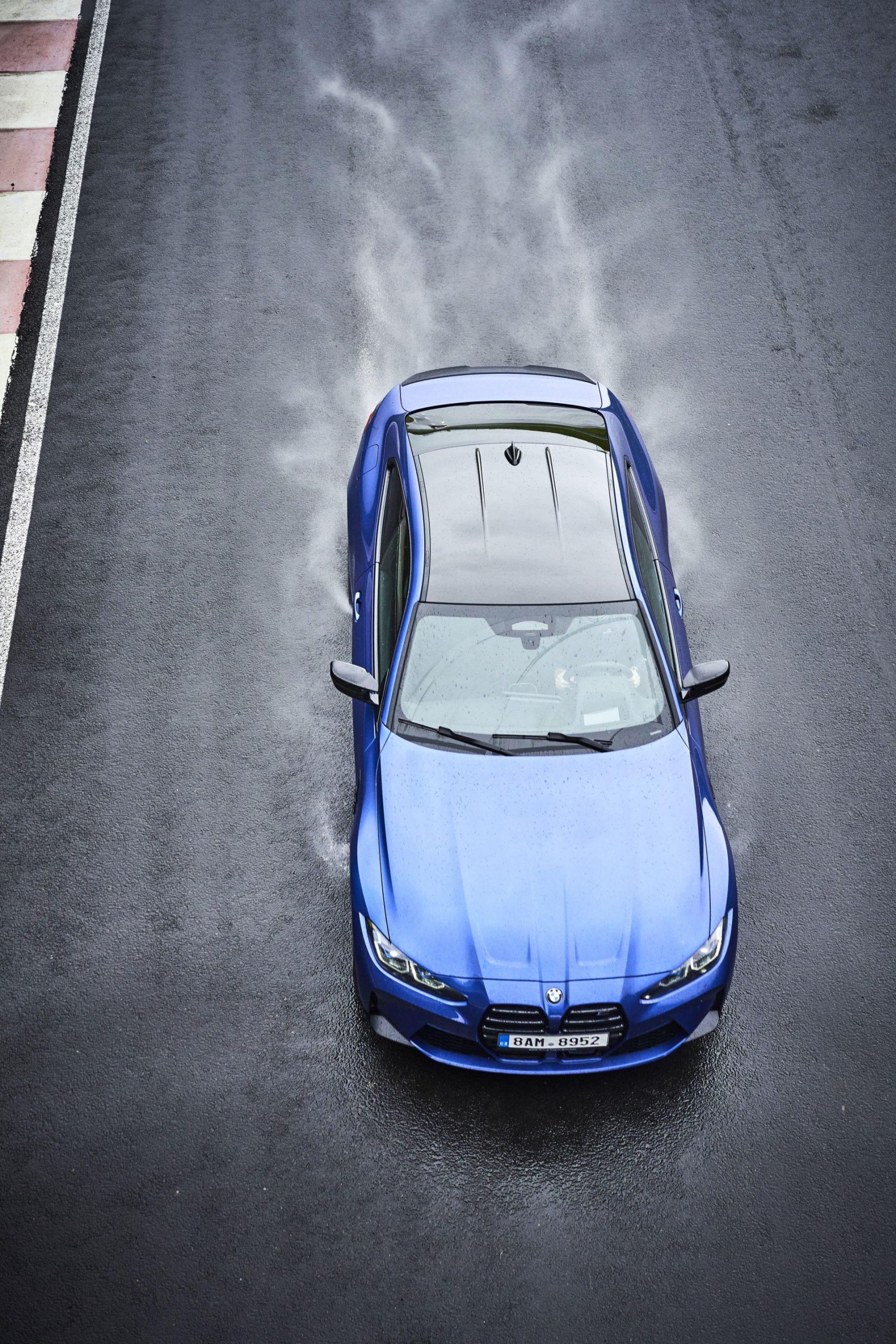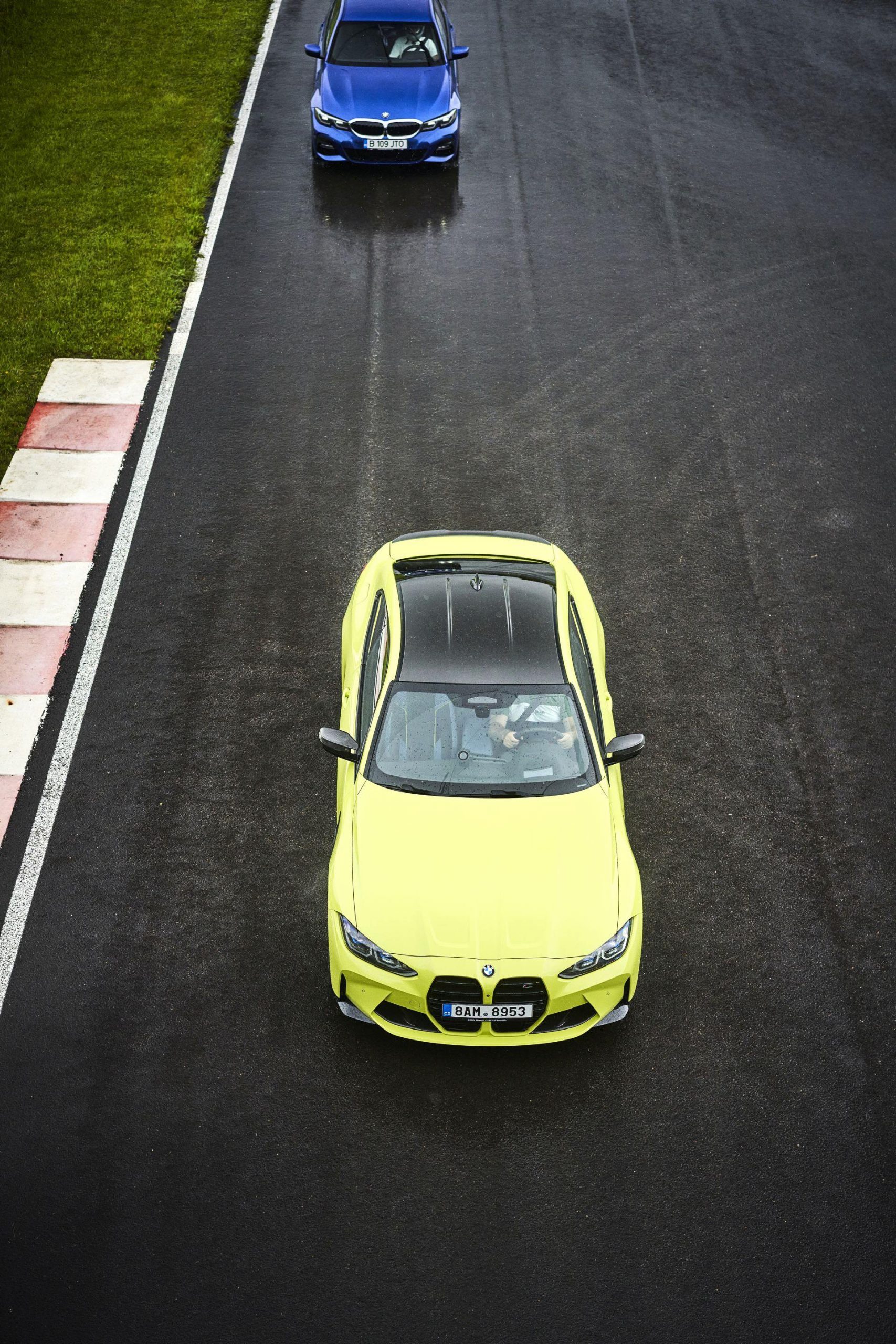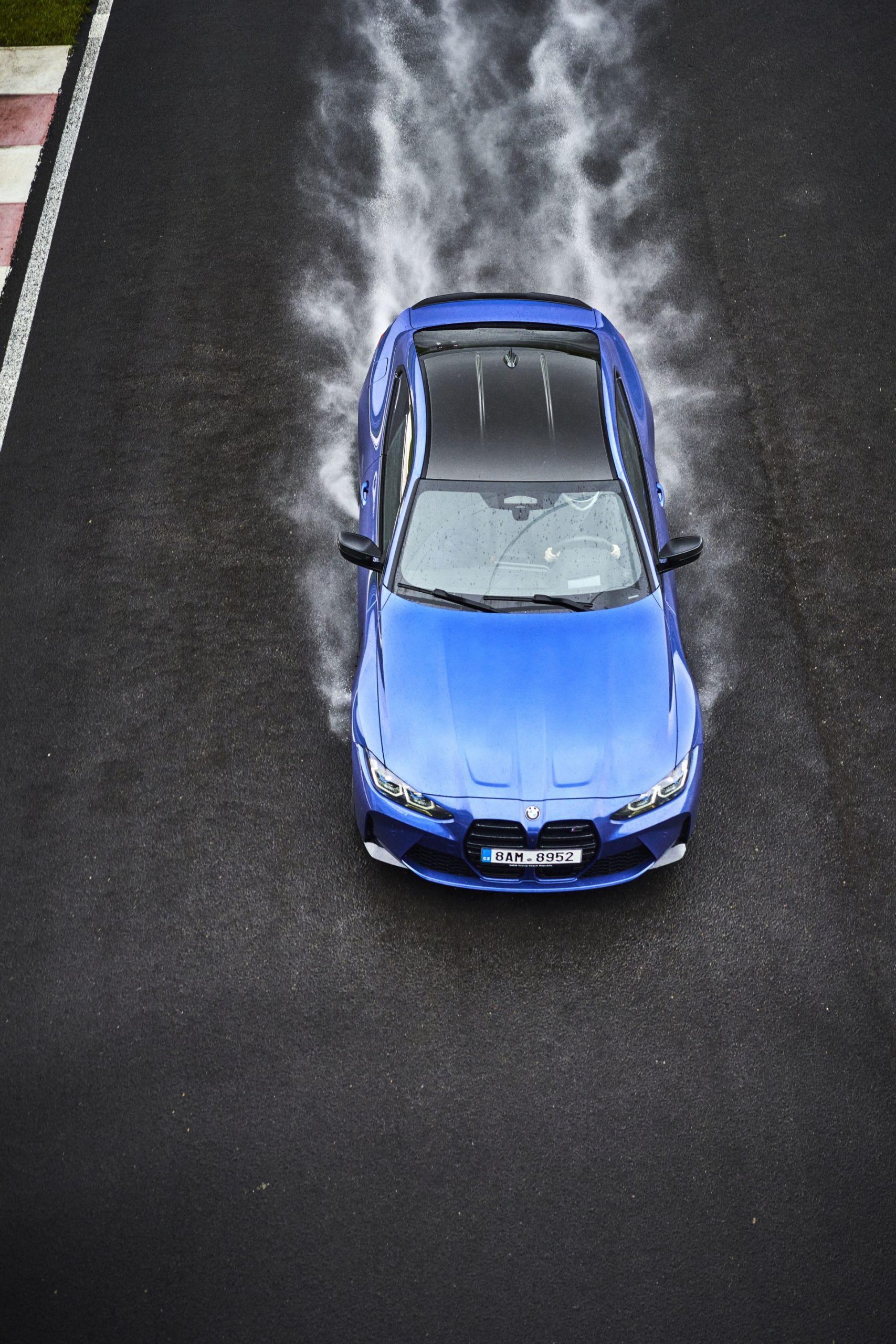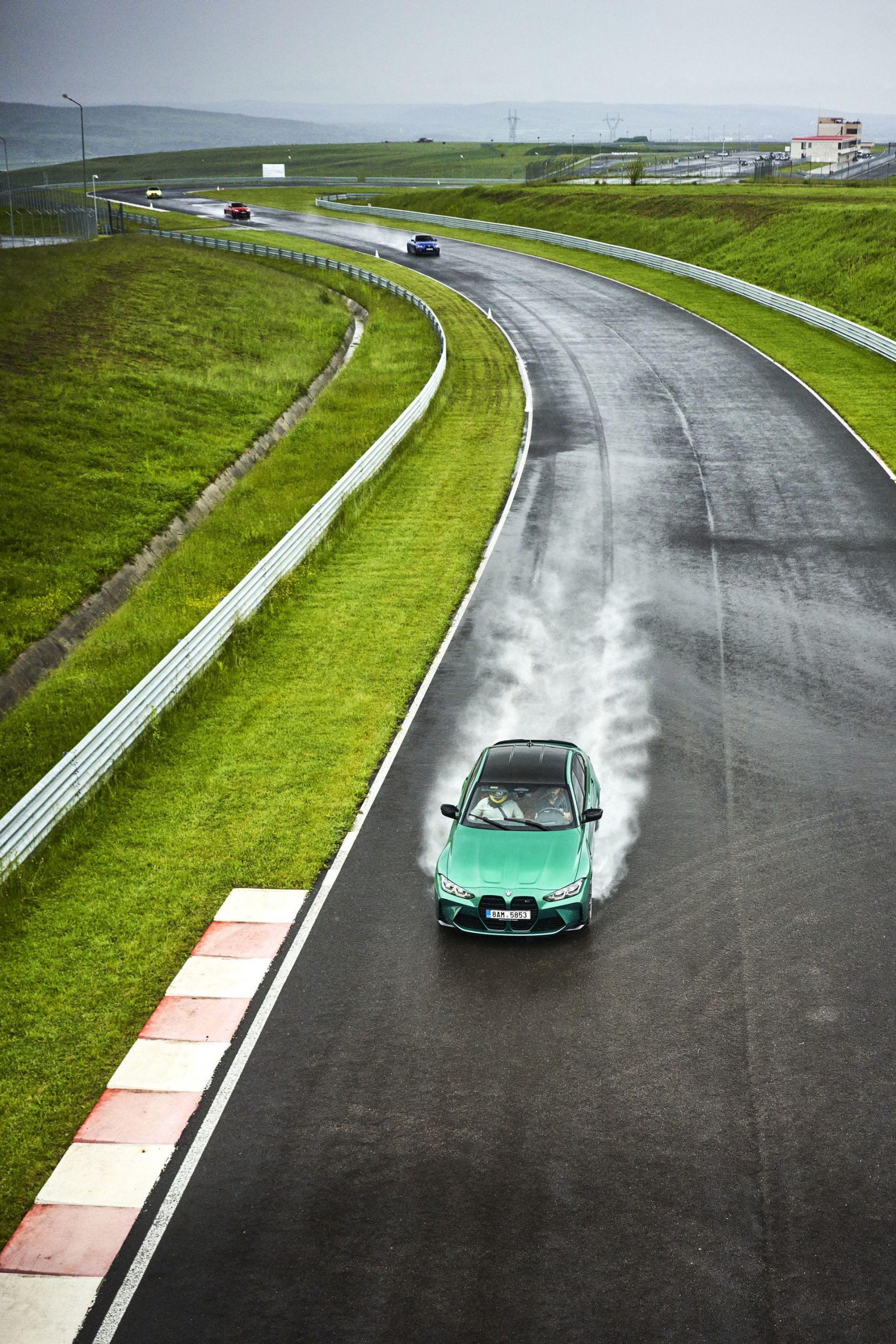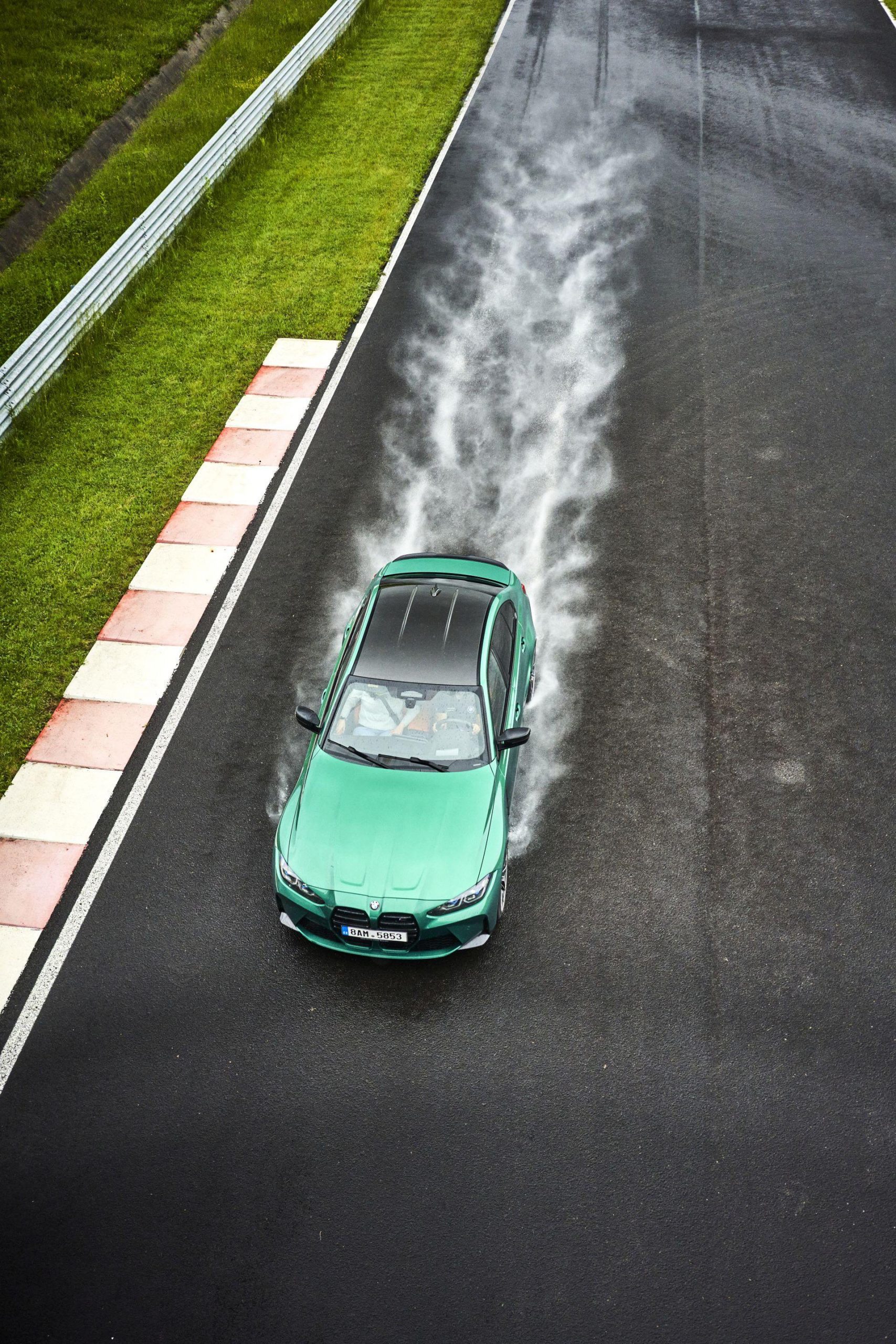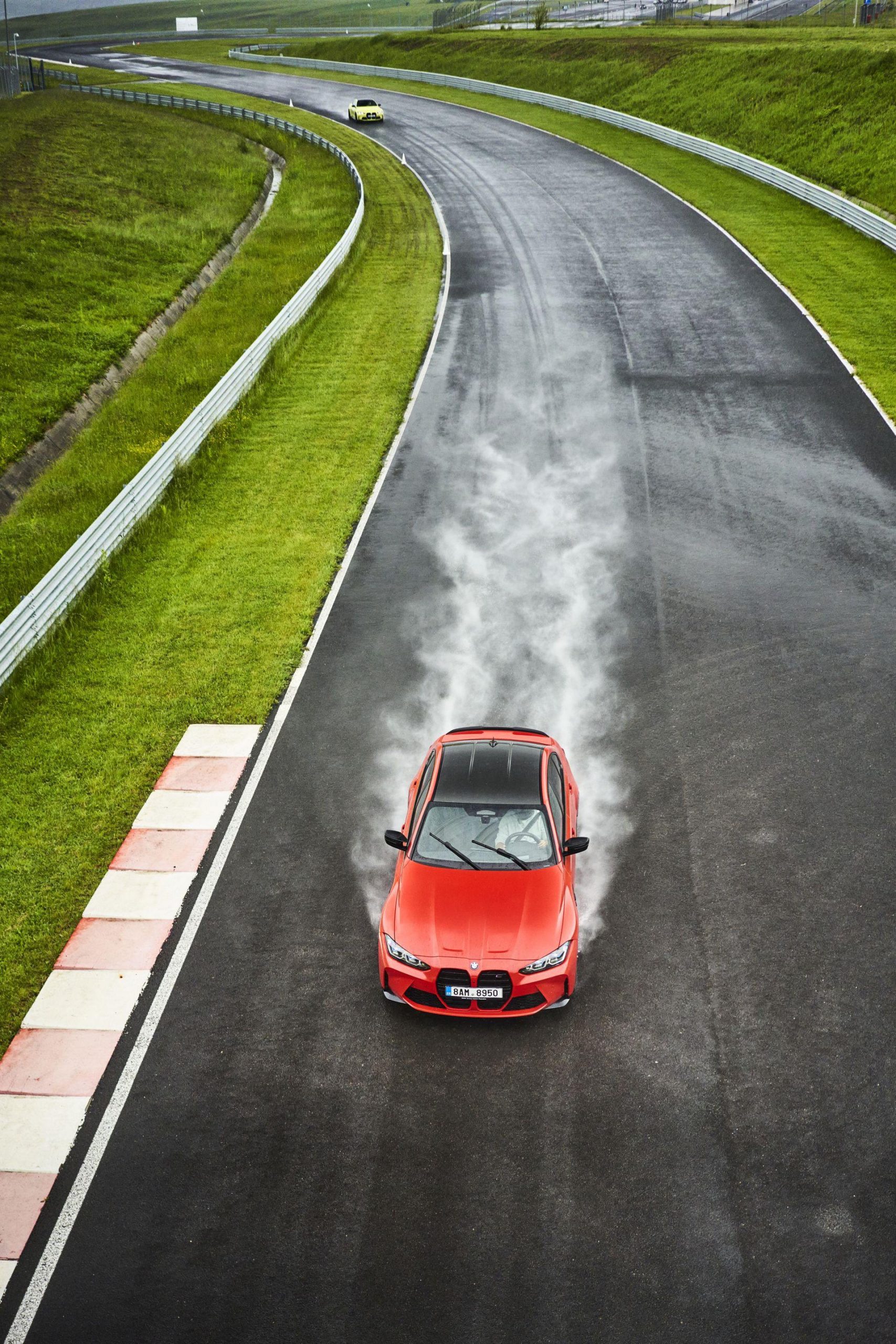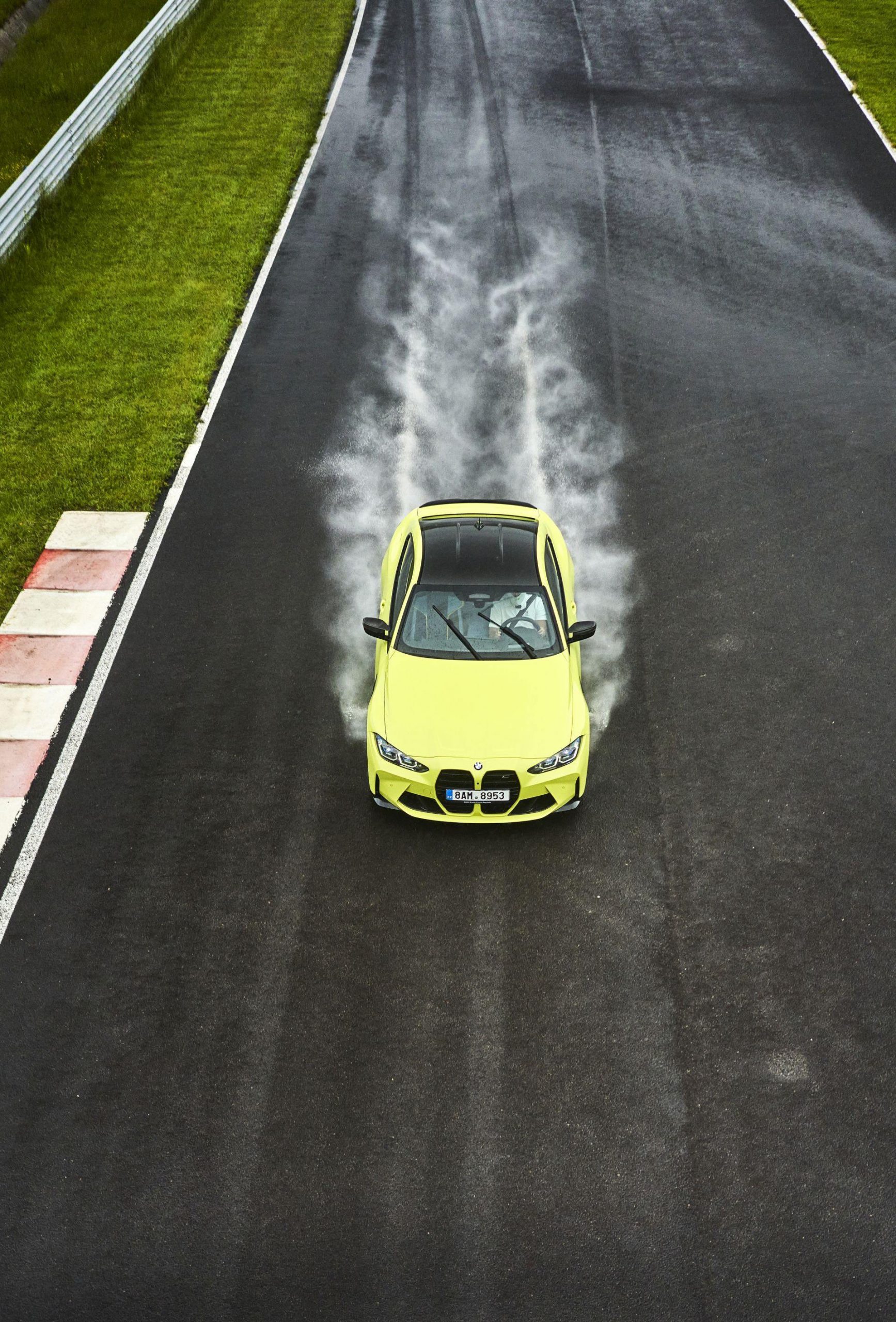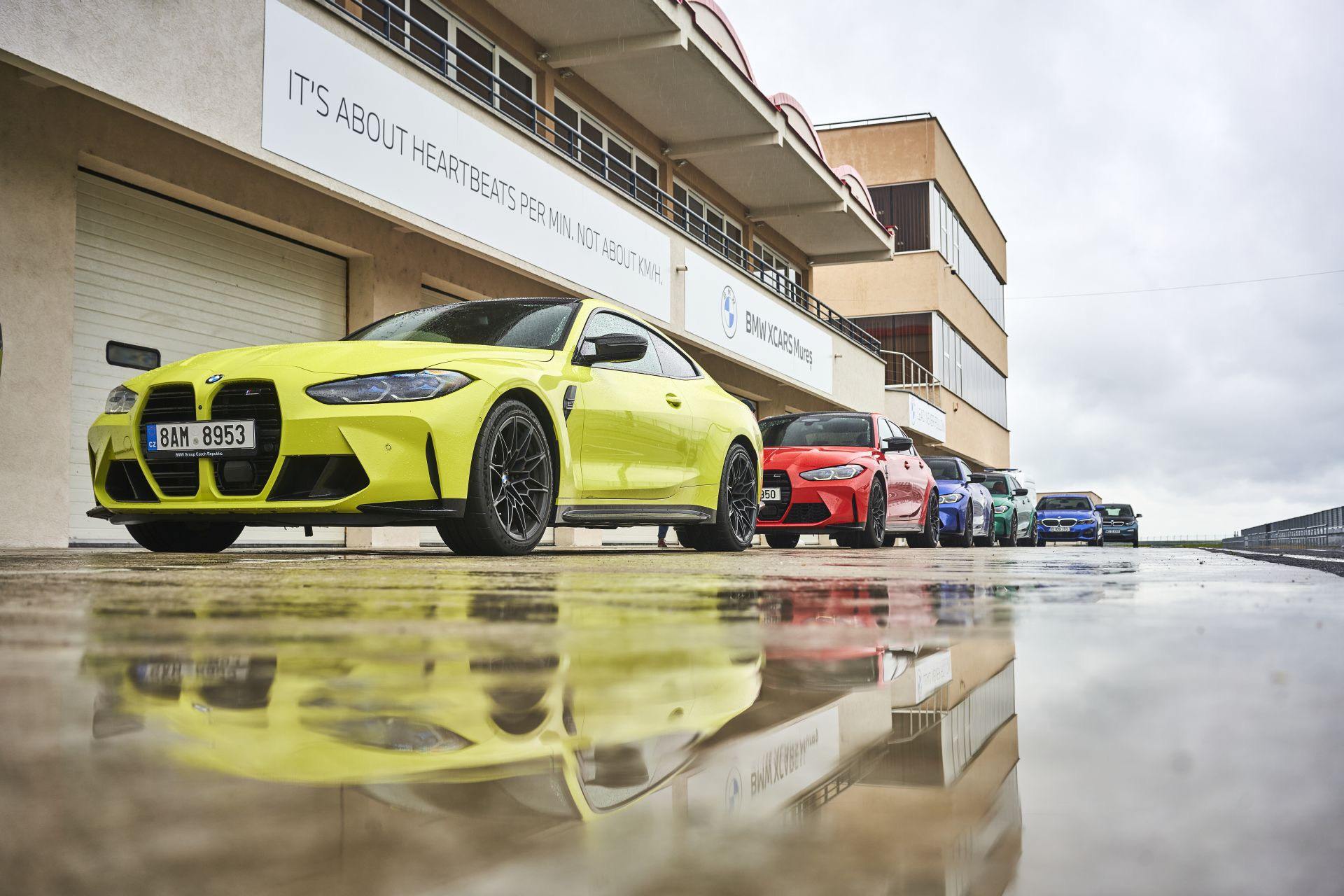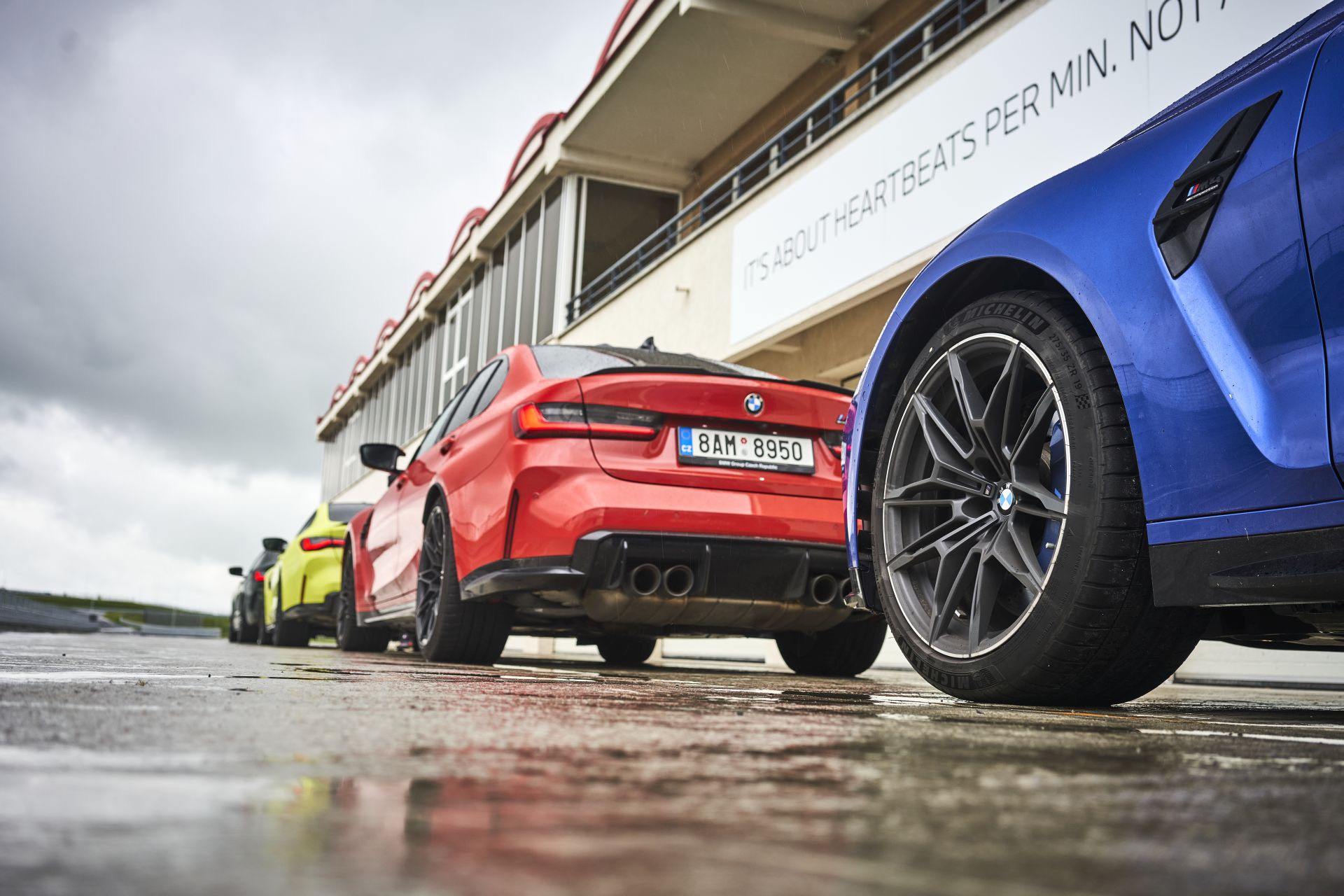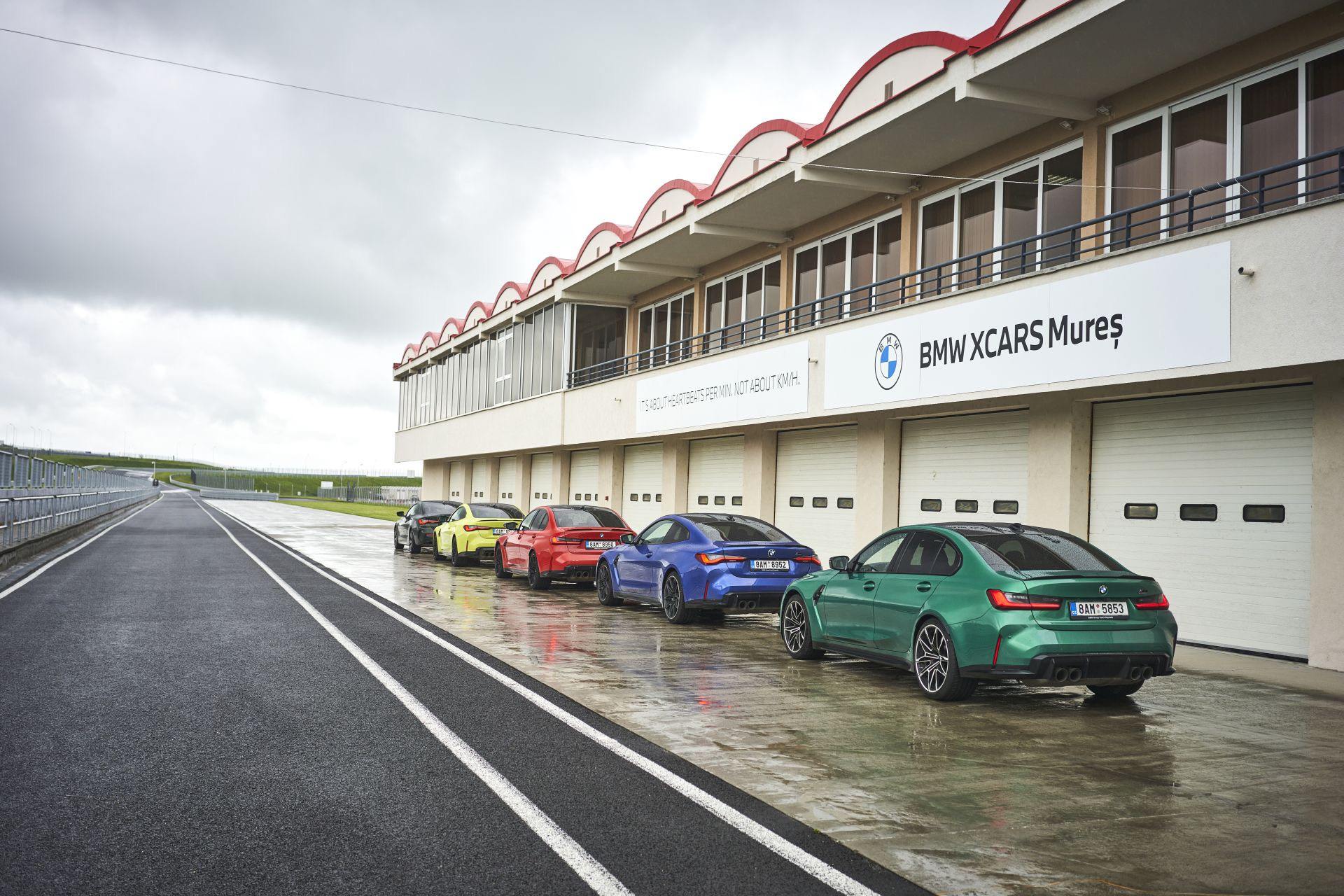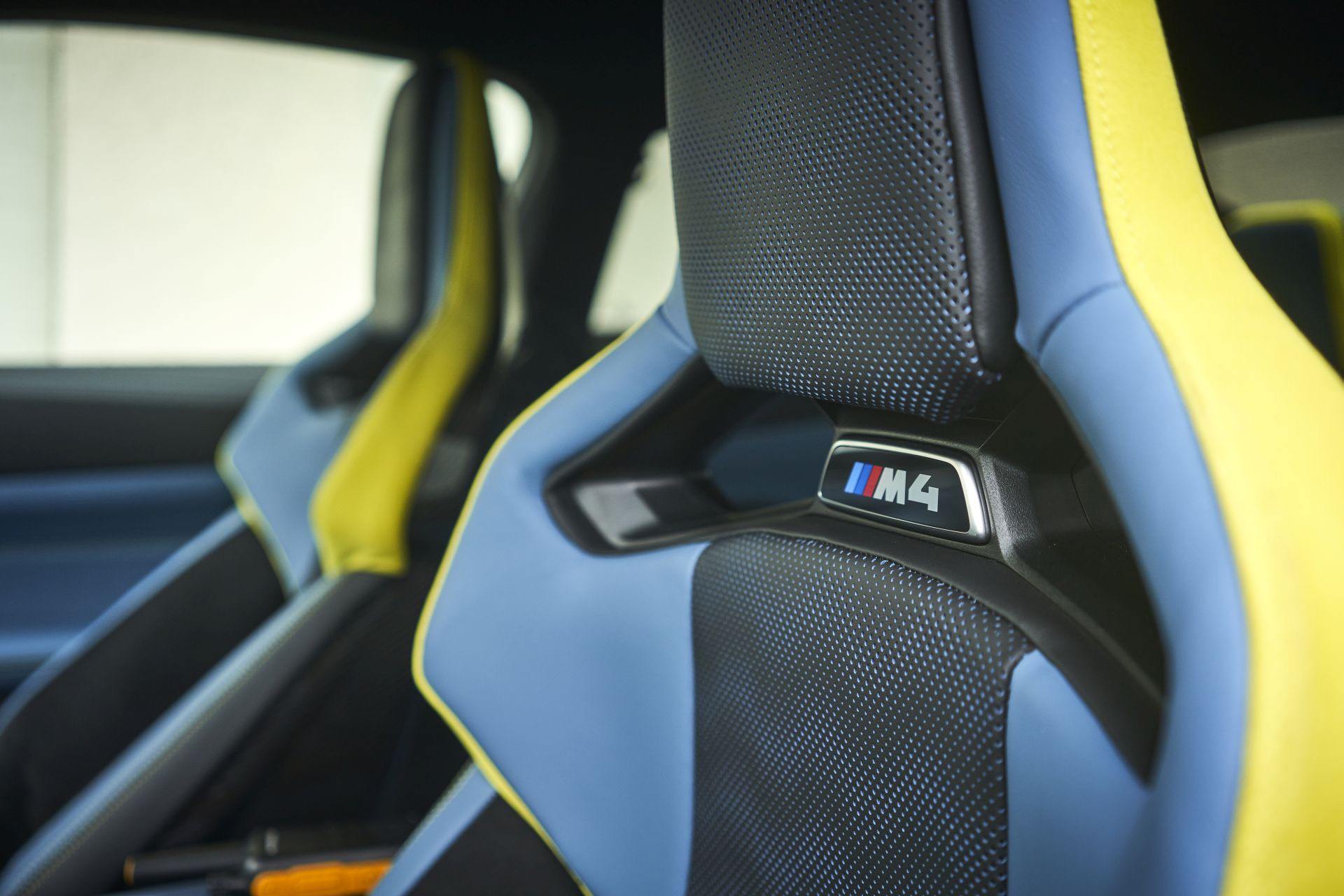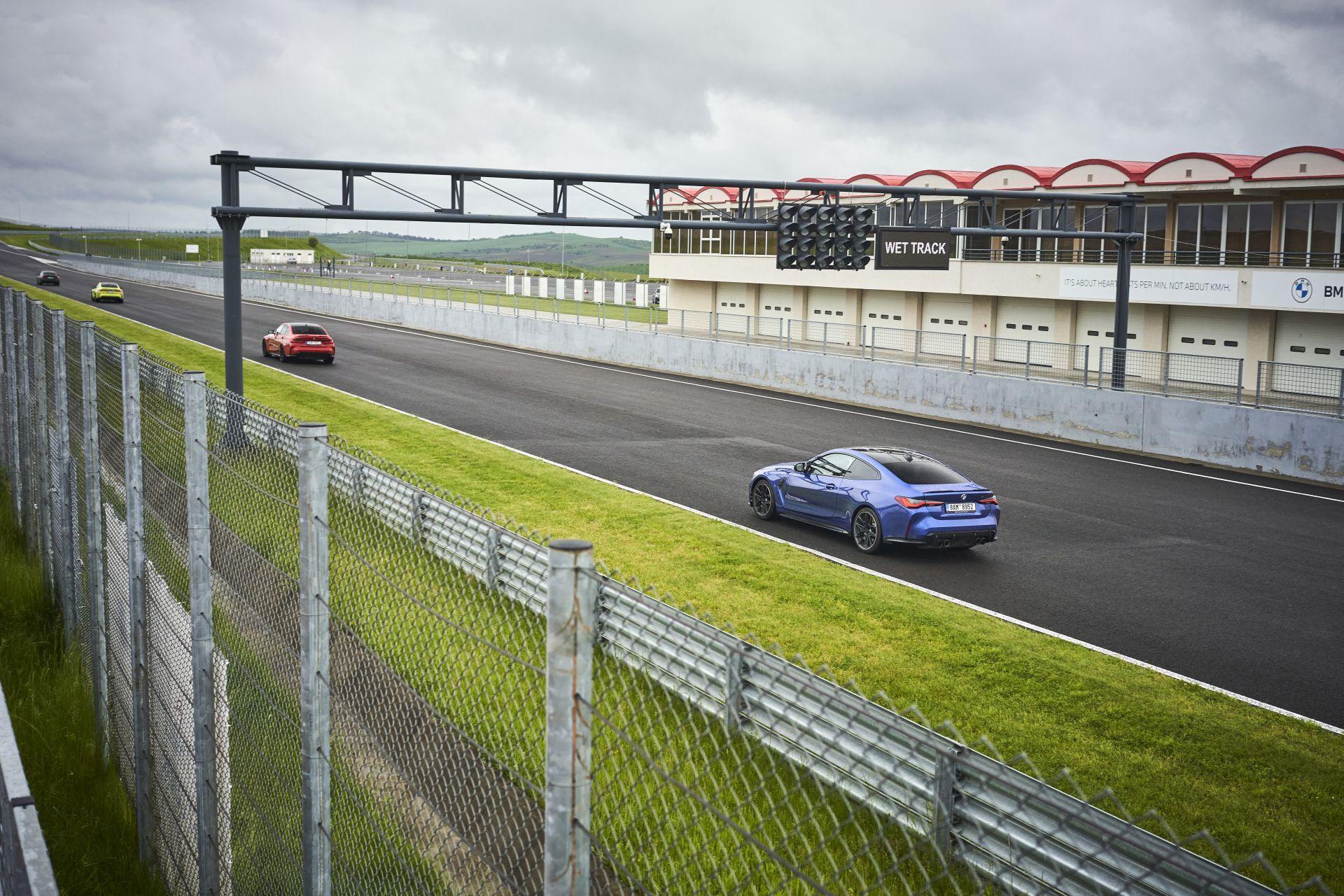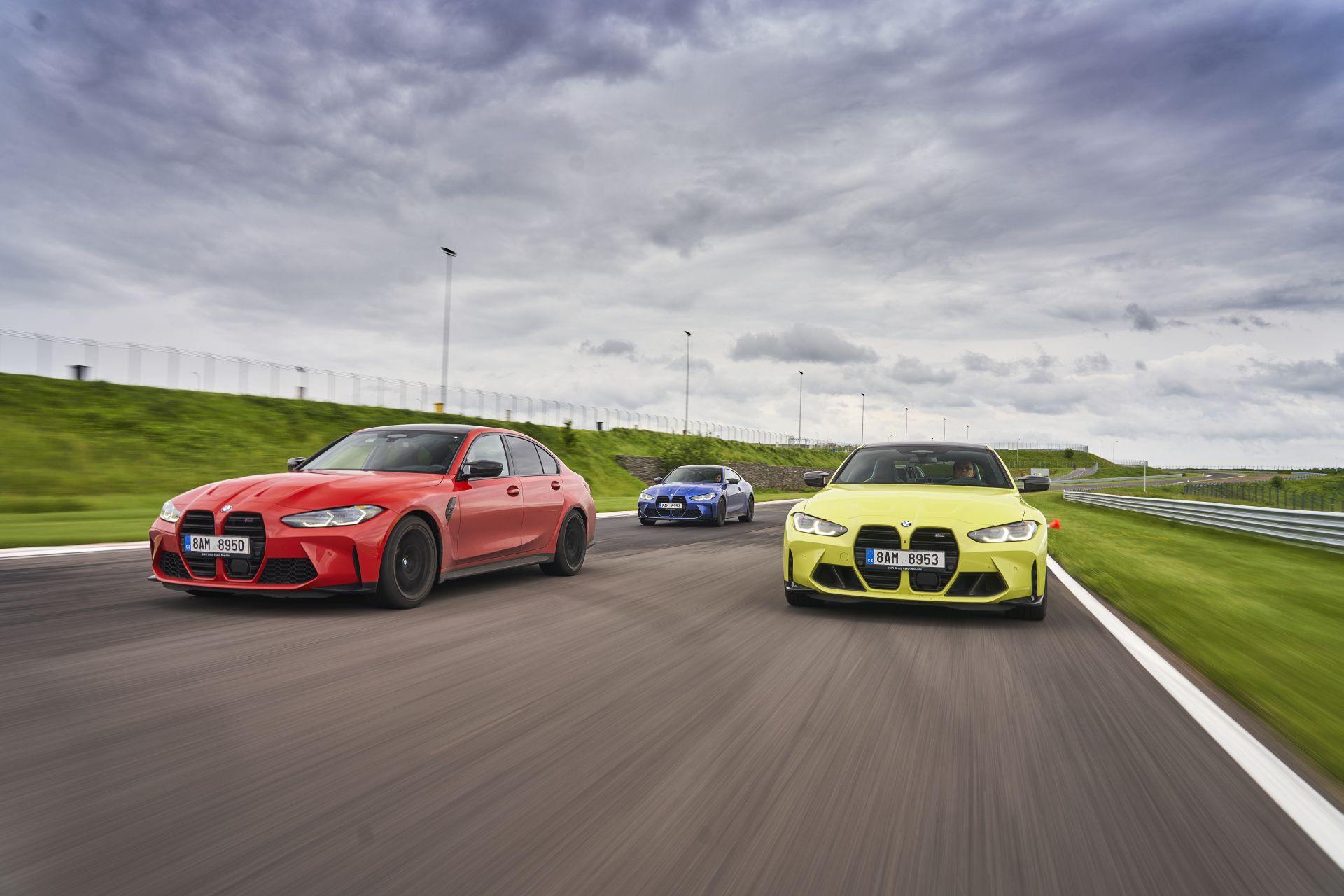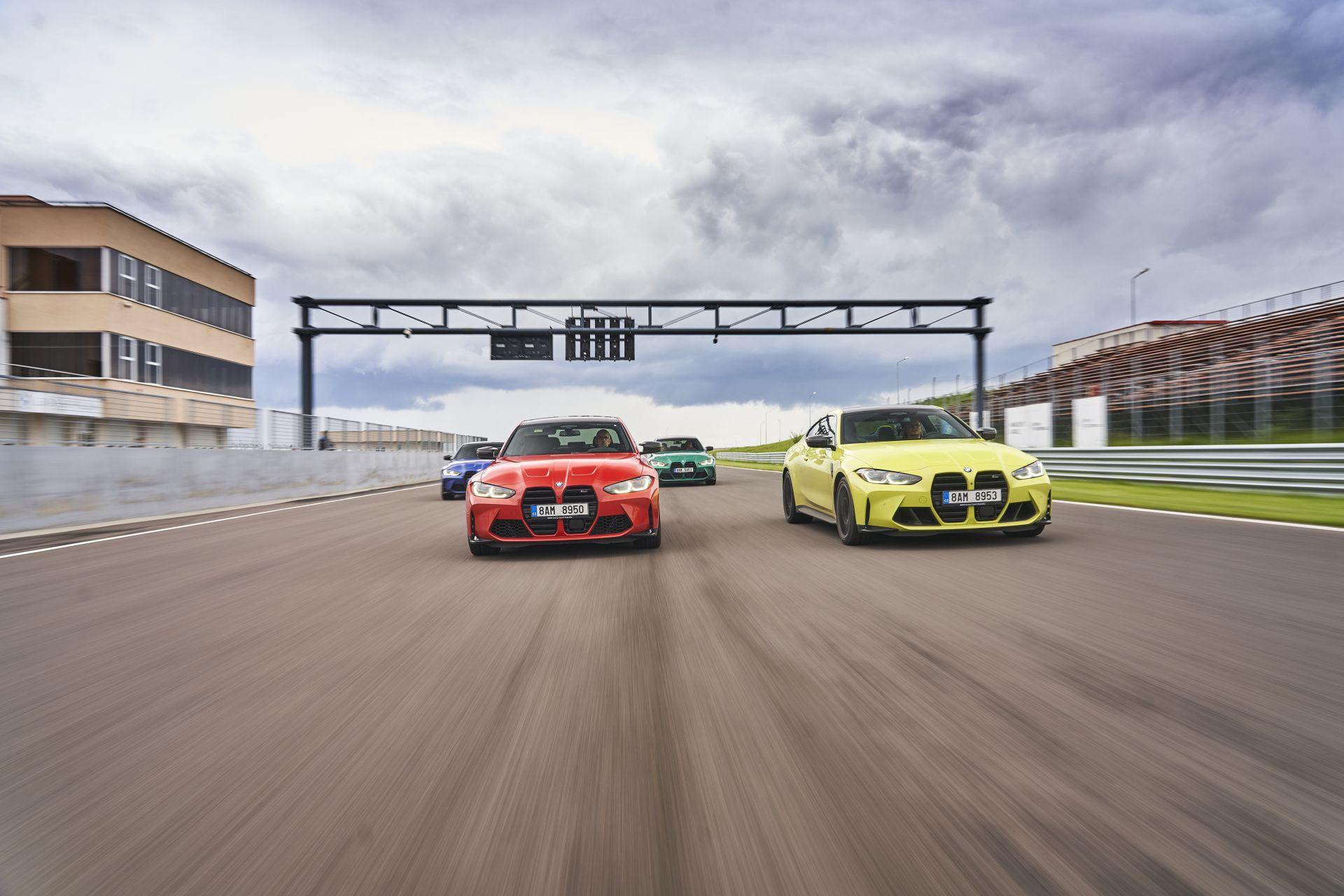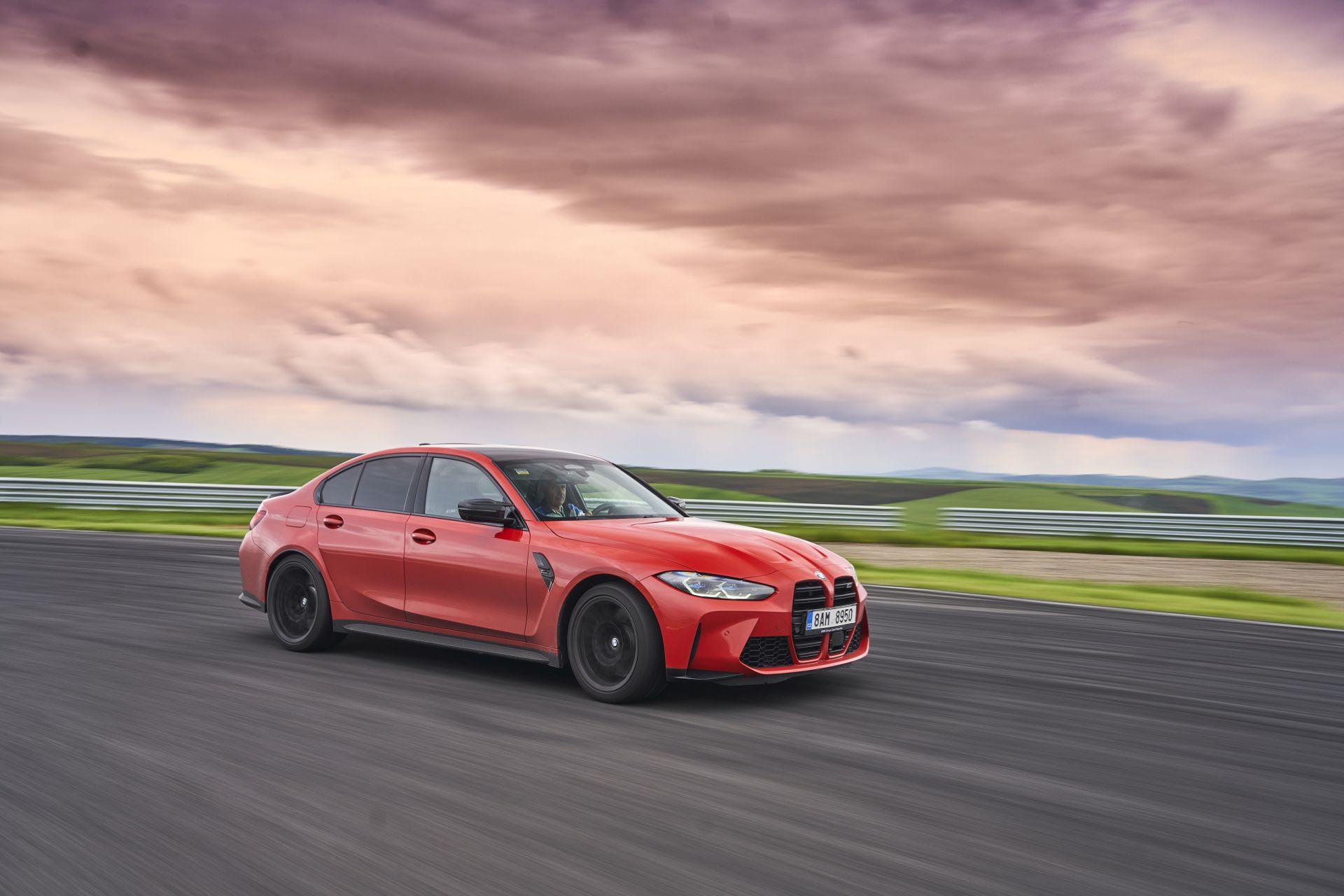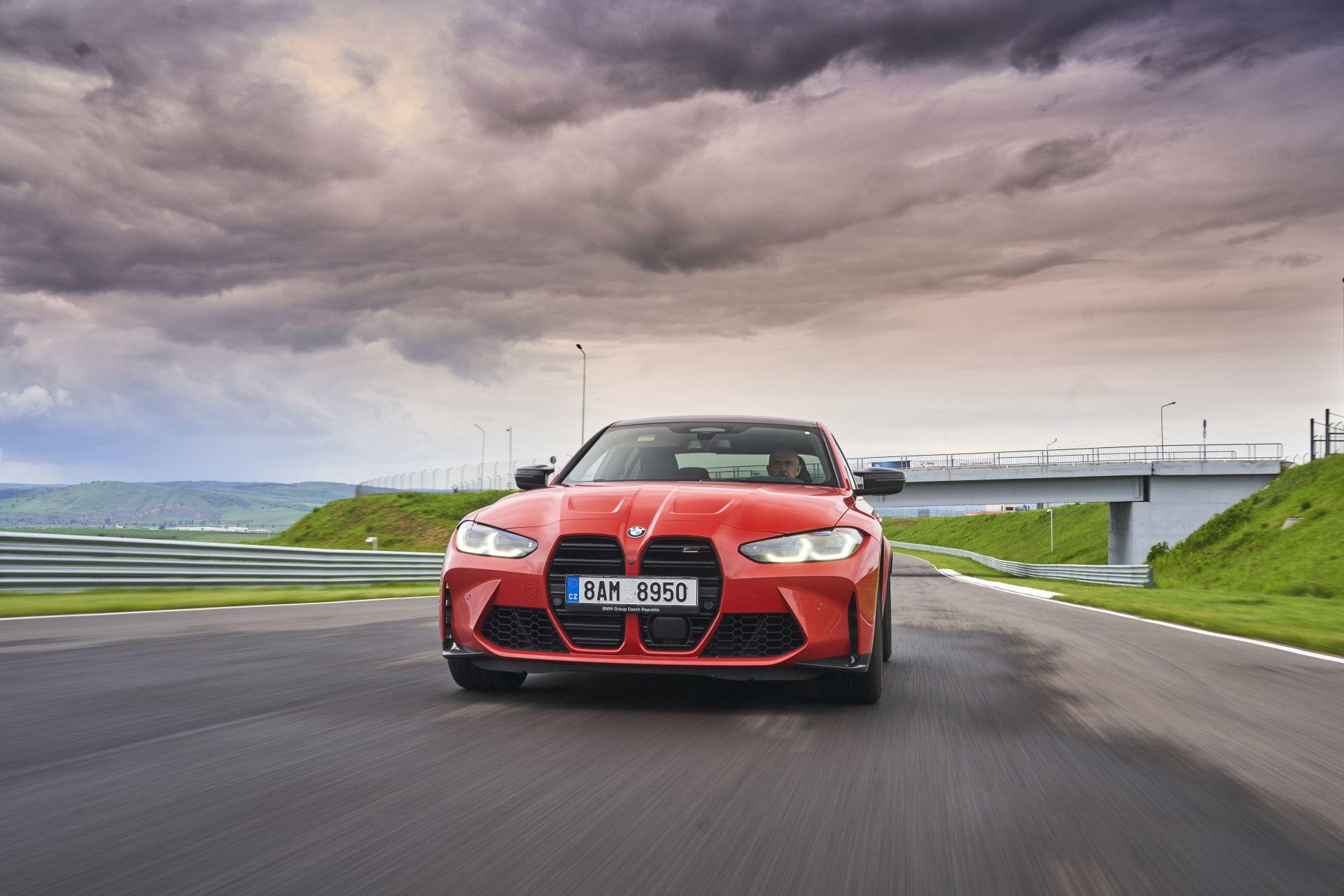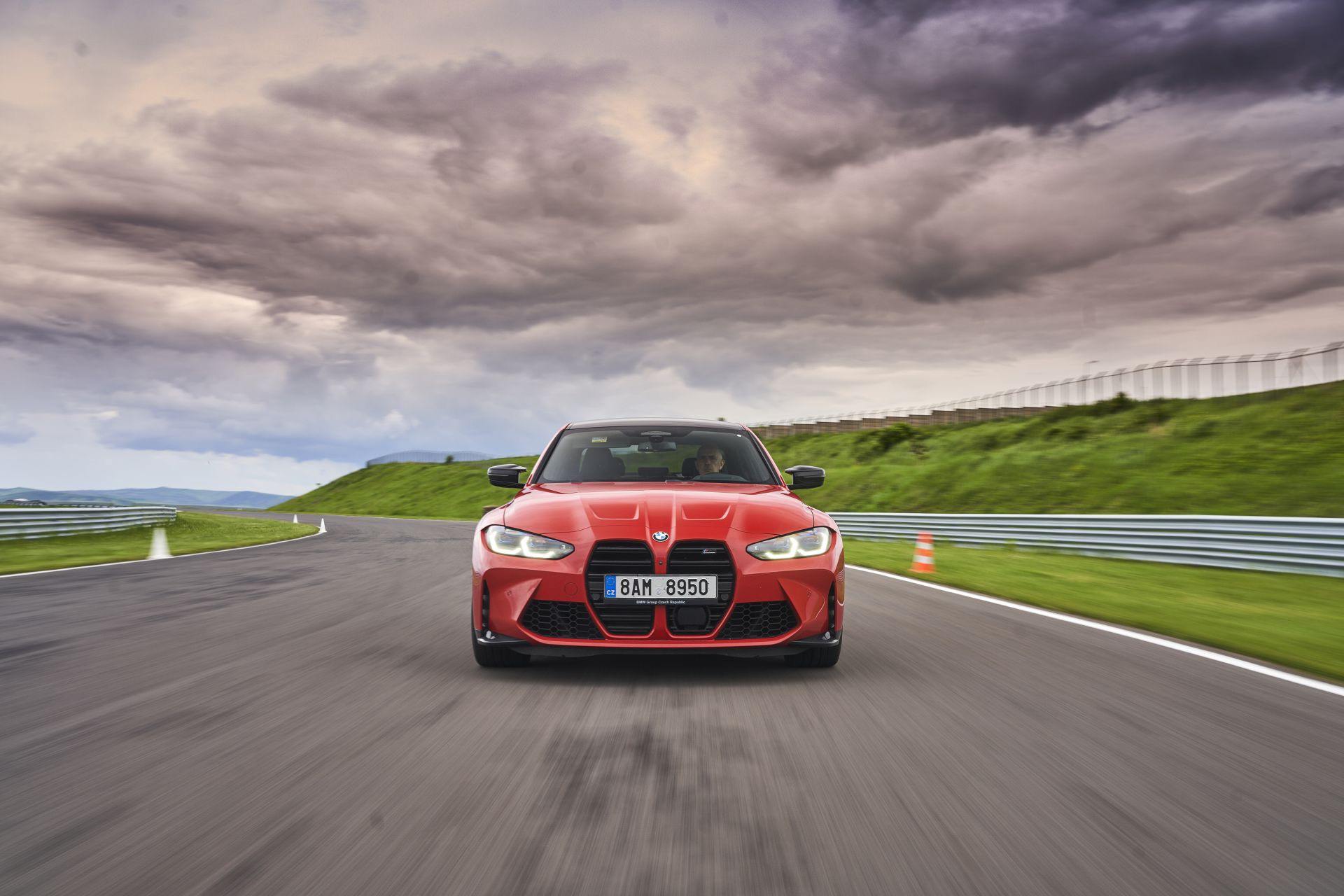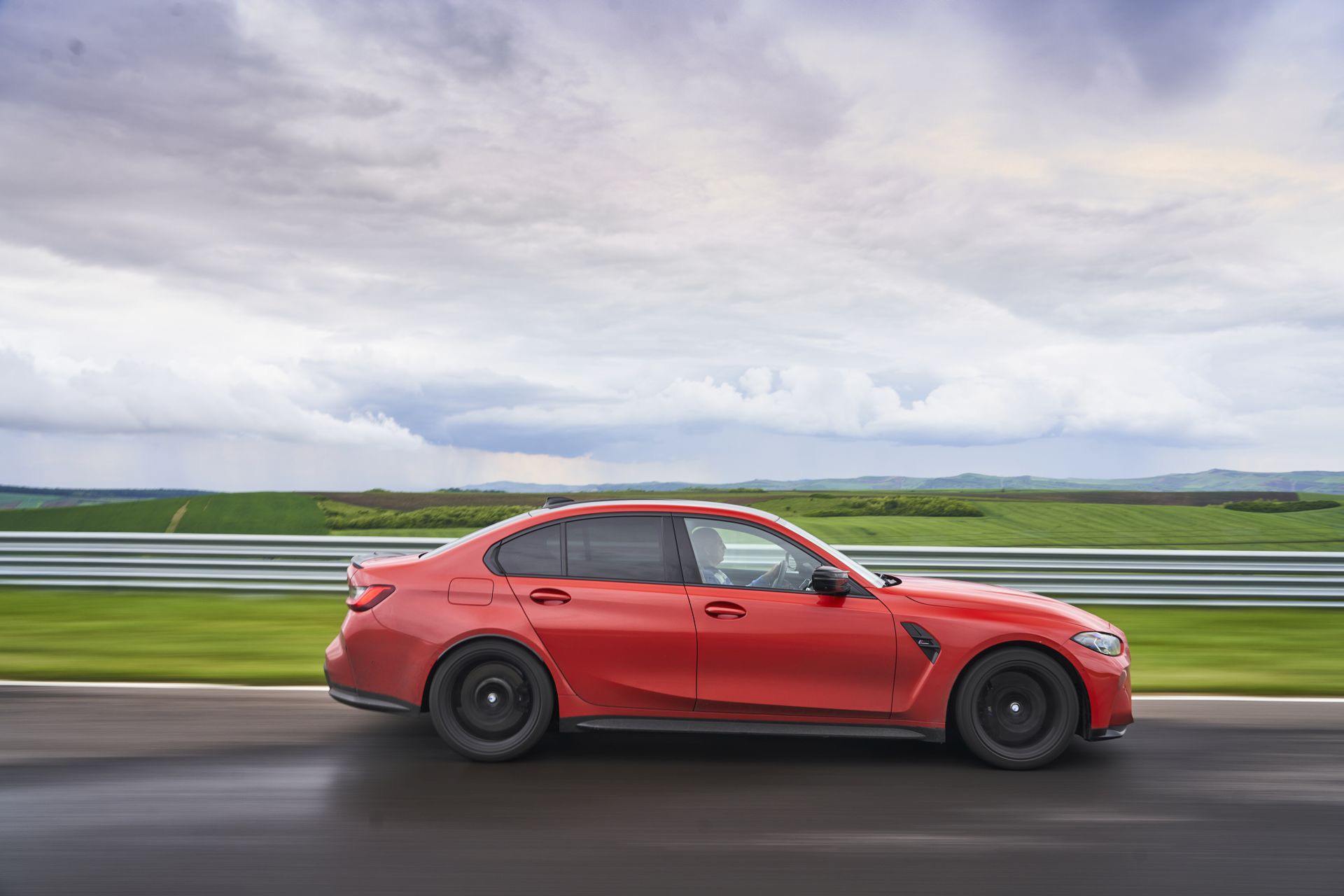Rarely have I or my colleagues seen a car so controversial, getting such mixed reactions from the get go, as it was the case with the new BMW M3 and M4 models. As a matter of fact, the controversial reactions kicked off well before the cars were actually unveiled – during the testing phase. That’s when the elephant in the room appeared, as there was simply no way to cover up that massive front grille on the initial prototypes that were thrown around the Nurburgring.
Pitchforks were raised in anger and online keyboard warriors were quick on the trigger. And yet, initial sales figures show that the new M3 and M4 models are some of the hottest items on the market today. How could this be?
Can We Look Past The Grille?
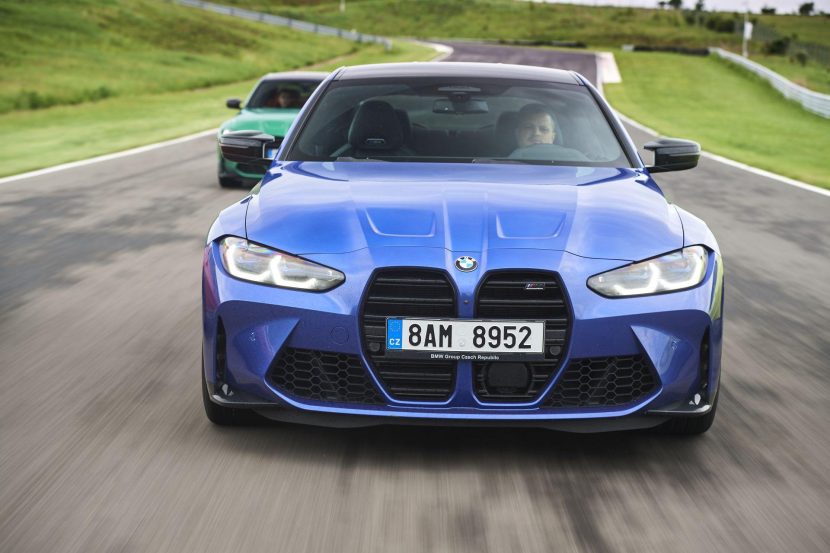
Some might say customers simply focus on the essence of these cars. As I recently found out, the M spirit is still alive and well inside, but I don’t necessarily agree. We tend to be superficial and care about looks more than we care to admit. Therefore, there has to be a different explanation which is pretty obvious if you think about it.
The ones who are terribly disappointed by the design are mostly old-school fans of the brand, and surprisingly, even millennials. Most of them grew up around the likes of the E30 or E36 M3s and developed a connection with those simple and analog cars. Back then, the emphasis was more on style and elegance rather than being all in your face.
Today, those rules no longer apply. In the terribly noisy world we live in, if you want to stand out in the crowd, you need to be a disruptor. Thus, the shapes we’re seeing on the new M3 and M4 simply struggle to get a message across.
The Most Diversified M Customer Ever
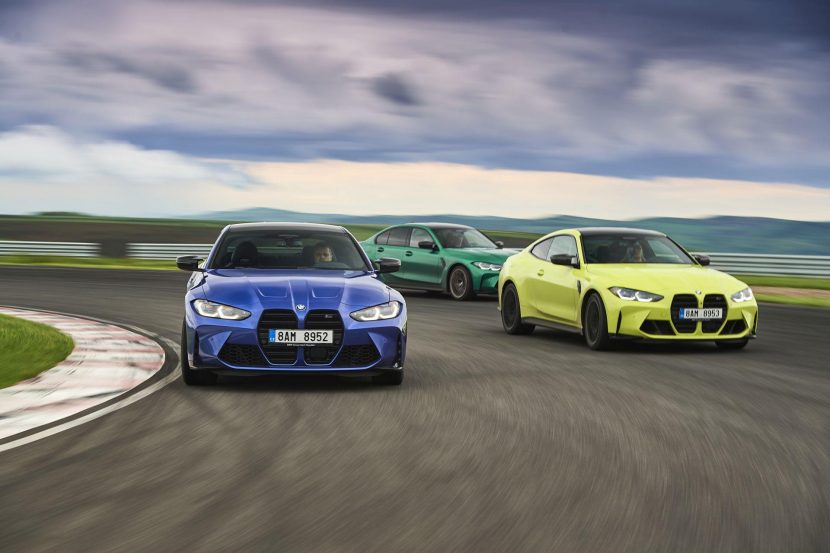
The target demographic has changed drastically and BMW knows it. They knew certain design cues had to change so their cars stand out more in the crowd. Sure, they offended some people by stretching one of the most iconic design features in the automotive world to the absolute limit, but the end result is definitely an eye-catcher.
The moment you approach a BMW M3 you notice just how much presence it has. It tells you it’s not playing around anymore and warns you that once you get inside, you should be ready to hold on like your life depends on it. Unlike the old F80 M3, this time you’re getting a pretty clear warning that your heart is bound to skip a few beats. And I absolutely love that about the new cars. No more hiding, no more modesty, no more pretending this car doesn’t have 500 hp. This is it, and it absolutely works.
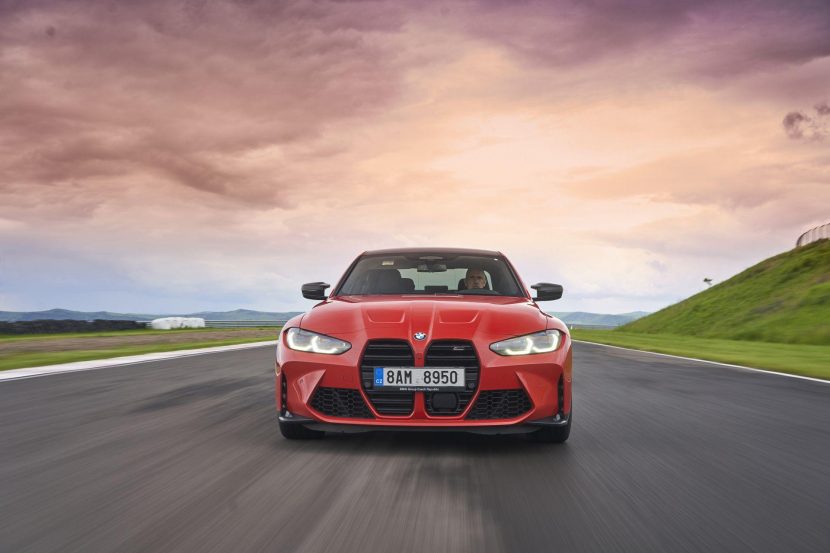
The fact that my tester came in Toronto Red added further fuel to the fire, as I thought it was the best-looking car in the group during a few days of intense driving in the heart of Transylvania. The entire fleet was brightly colored, varying from Sao Paulo Yellow to Isle of Man Green, Portimao Blue and Toronto Red. These are attention grabbers and you couldn’t go unnoticed anywhere in these cars, no matter if it was the M3 or the M4.
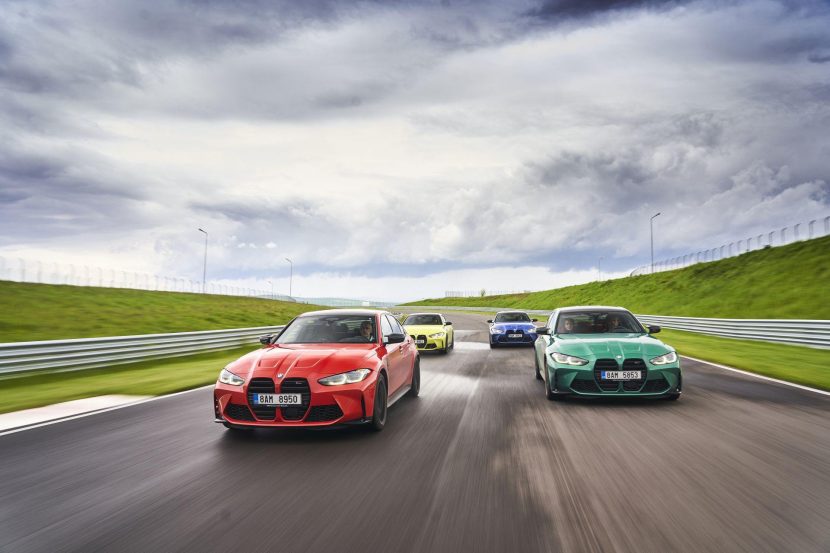
Simple But Effective Interior
Get inside and you’ll soon notice a similar approach. You can now configure your M3 in more ways than before and you get to pick from psychedelic colors if you want, or add awesome carbon fiber seats to the mix. However, I do have one mention: choosing the perfect seats for this car is a tricky task.
While the M Carbon Fiber seats do look great and hold you tighter than ever, they will be hard on your back and the suspension in the new M3 is not exactly as comfortable as in the 7 Series. Therefore, unless you’re planning on tracking this car at least a few times a month, you’ll be better off with the standard seats as they do provide more cushion for our daily driving on roads that may also include a pothole or two.
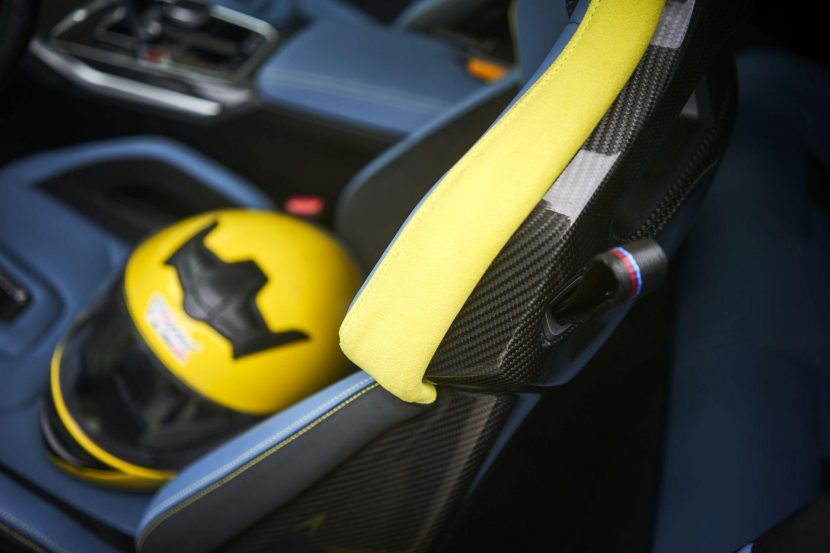
Apart from the seats, you also get the usual M-style add-ons. From a new instrument cluster, to a new gearshift lever that now – thankfully – includes a Park button, unlike on the old DCT units that were a bit more confusing to use. And while that may not sound like a big deal, there’s more to this new gearshift lever than meets the eye, because underneath it hides a completely new gearbox which changes the character of the car more than anything else.
Up until this new generation, if you wanted an automatic gearbox on your M3 you had to deal with the perks and downsides of the dual-clutch 7-speed DCT gearbox. I know some are still praising its ‘mechanical feel’ but the thing is, you’d only ‘feel’ that when driving on the edge. And yes, it did make you more connected to the car but those were rare and in between instances. In daily commuting situations and especially rush hour traffic, the DCT gearbox was known to be a bit less refined than one would prefer. That’s no longer the case with the new 8-speed torque converter.
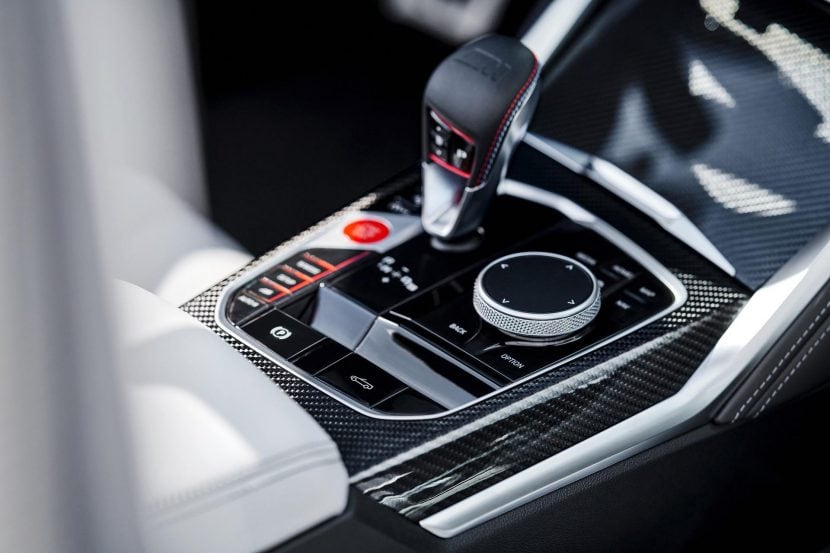
Driving this car through a variety of traffic situations revealed its superiority. It’s smooth, linear and does away with any sort of hiccup in daily usage. It even keeps fuel consumption in check, even though that’s not necessarily a worry for anyone buying an M3. Sure, it gives away some of the feel but only at higher speeds or on the track and even there, I couldn’t complain about its behavior.
However, the moment you set off in the G80 M3 you realize this is a true M car. Just like Jochen Neerpasch, the founder of BMW Motorsport told me in an interview a few years back, the only real BMW models are those with the M badge on the boot. There’s such a big difference in the way these cars feel compared to their ‘pedestrian’ counterparts, it’s hard to put in words.
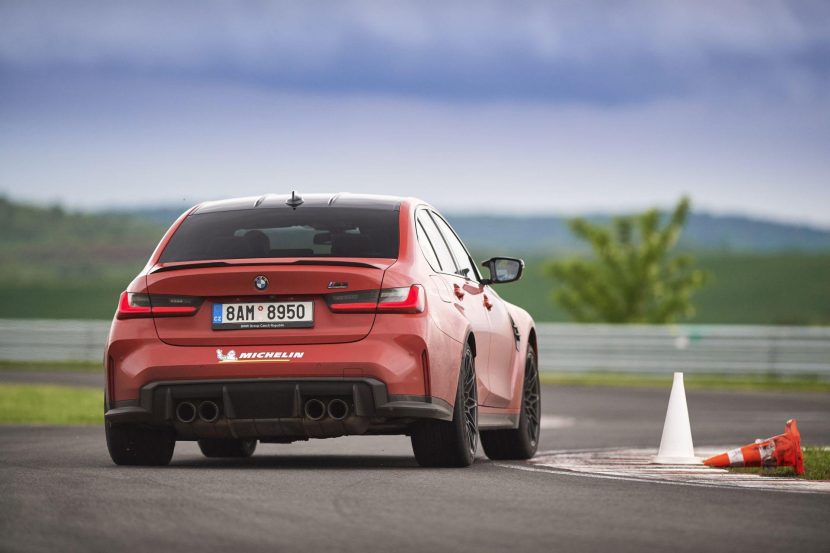
It makes sense too, as the suspension on the M3 is not only specifically set up to be harsher than on a regular 3 Series (and I’m including the M340i here too) but the parts themselves (wishbones, control arms, etc) are simply bolted on to the chassis without too much rubber in between.
Therefore, the moment you turn the wheel in an M3, it feels so much stiffer and more composed than in a 3 Series. It’s simply unbelievable. And then you tilt the gearshift lever to the right and set off, feeling every nook and cranny in the road and hearing the pebbles hitting the inside of the wheel wells as they fly off the sticky tires.
The first thing you notice when you drive this car is how tight everything feels. It’s as if you’re sitting on a cheetah that’s ready to pounce at any moment, tense and in anticipation of the slightest movement from its prey.
Highly Configurable

Luckily, the car has adaptive…. Everything. So you can adjust settings the way you prefer. BMW listened to its critics and starting with the F90 M5, it included a set of M buttons on the steering wheel that allow you to save two presets for any given driving scenario.
The on-board computer allows you to adjust everything, from the throttle sensitivity, to the stiffness of the chassis, the revs and now even the brake input sensitivity. To top everything off, there’s also a trick traction control system on board that allows you to adjust its sensitivity in ten steps so that you can get that rear end sliding as much as you want, proof that BMW M engineers still know how to have fun.

Once you saved your preferred setups on the two buttons, you can finally take off and that might just be interpreted literally. The new M3 Competition comes with a more than potent powerplant under the hood. It’s the new S58 engine; a 3-liter straight six twin-turbocharged engine good for 510 PS and 650 Nm of torque that feels quite a bit stronger than that.
It’s a marvelous piece of engineering too, sharing its crank with the M4 GT3 model which will be doing some pretty hardcore racing, having 3D printed parts (such as the turbos and the cylinder head) and a completely new cooling system.
Setting off, you’ll feel that torque almost instantly and the ‘turbo lag’ is nearly non-existent. A lot of the credit in this regard goes to the transmission though, as it downshifts in an instant, always keeping you in the torque band. And this car pulls like the cliché freight train which isn’t necessarily unexpected. What did surprise me though was how composed it felt throughout the rev range and even setting off.
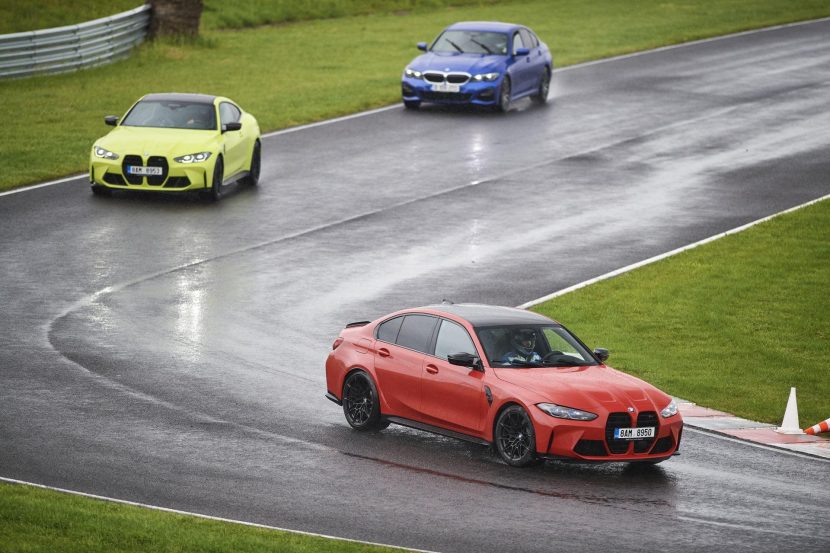
Mind you, this is an early M3 Competition model, which means it doesn’t have the M xDrive system which arrivers this July. And yet, the rear M Active differential managed to put the power down without too much drama, something I couldn’t really say about the old F80 M3. A lot of the credit does go to the gearbox but the engine itself has also been set up to deliver the torque in a much more linear and predictable fashion than the old S55.
All of this does come at a cost though. And that’s the weight. The new M3 Competition is about 150 kilos heavier than the old model and to some, namely the ‘spec sheet readers’ it may make a difference. On track though, it didn’t.
In The Land Of Dracula
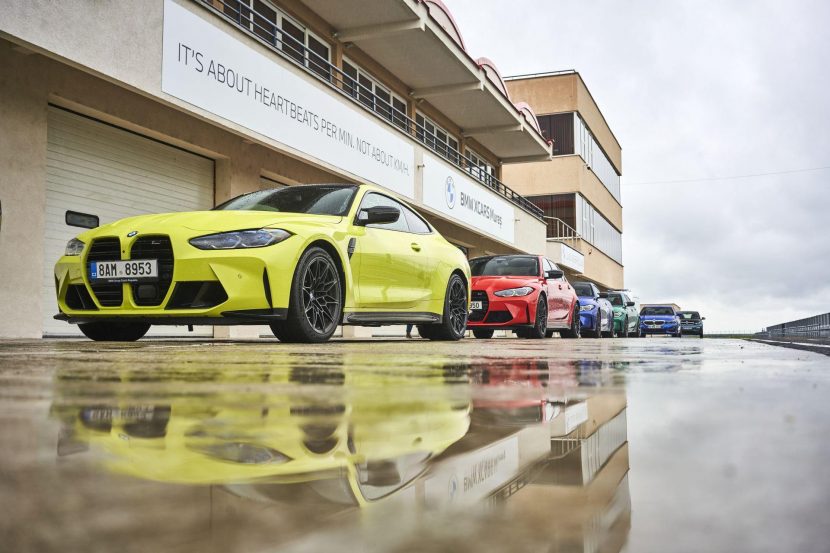
We were invited to test out the dynamic abilities of these cars on the Transylvania Motor Ring, a brand-new track located in the heart of Transylvania, on top of a hill, with a rather ominous atmosphere around it. Unfortunately for us, it rained the entire time, but we still managed to squeeze the butter out of these cars.
During my first laps, I set everything in Sport Plus mode, only to find out it made the car way too bouncy over uneven surfaces, and harder to control. After a while I noticed that the best setting for this track included the Chassis on Comfort mode (to soak up the bumps easier, without upsetting the rear axle too much), the Engine on Sport Plus (for the best throttle response), the Brakes in Sport mode and the transmission in the least aggressive setup to offer more control over it. Also, in the ‘full-attack mode’ for the gearbox, the revs would be kept a lot higher, making the throttle a bit too sensitive for my liking, especially in the wet.
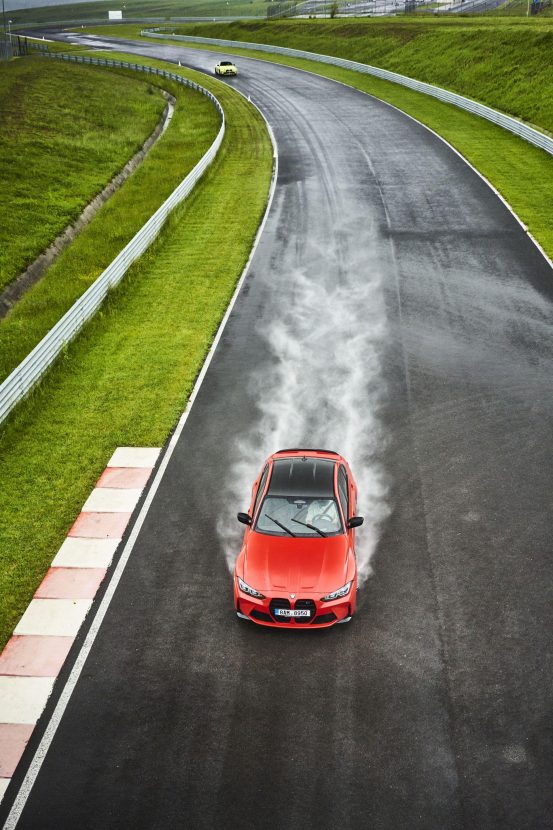
Then, the fun began. Even though the asphalt was soaking wet, some highlights did pop up. First: the front axle grip. Despite having to carry over 1.8 tons (myself included), the front axle of the M3 Competition inspired a lot of confidence with no sign of slippage or understeer whatsoever.
The Michelin Pilot Sport 4S tires also played a part here but overall, the new elastokinematics of the front axle showed their worth, as well as the extra bracing under the nose of the car, keeping everything stiff and ready to go. The turn in is sharp and the steering, while still electrically assisted, somehow felt more natural and less artificially heavy as it used to be in Sport Plus mode on the old F80 M3.
All that while offering little feedback through the palm of your hands but even so, it was incredibly precise at all times. Just look where you want to go, aim, and the car follows without question.

Since the track was wet, most of us were concerned about not losing the rear end on exit with a bit of overenthusiastic pressure on the go-faster pedal. While I didn’t turn off the traction control system, the rear axle did its thing and felt composed at all times.
After passing the apex, even under hard acceleration, the power was sent to the asphalt without too much drama and I had to keep telling myself that this is only the rear-wheel drive model. Sure, BMW likes to remind you that this is still an M car so even with the DSC on, the rear wheels would start a little dance on occasion. Therefore, that will let you know you should back off the throttle just a little bit. And those were the best moments on the track – knowing you reached the car’s limits.
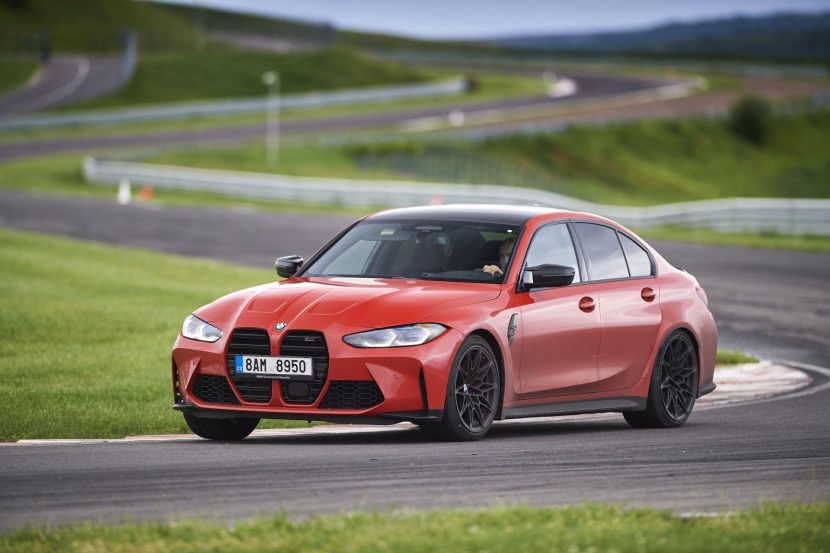
As for the weight, you simply don’t feel it. In corners, there was so much grip that this car felt just as light and nimble as the old model or the one before it. The body control is simply staggering and the clever engineers deserve a standing ovation.
The downsides come from the tradeoffs. Customers want a car that has a dual character when it comes to M models and reaching that perfect balance can be tricky. Our tester, for example, came with double glazed windows and that means you could barely hear the engine from inside the cabin.
Sure, that’s done to create a quiet ride on the highway but on the track, it takes away some of the aural experience and it matters, because you want to know when to shift without checking out the instrument cluster or the HUD. The Otto particulate filter didn’t help out either. So, with a muffled-out sound, you actually need Active Sound Design inside the cabin, even though I would’ve preferred a little less bass in the notes it was pumping through the speakers.
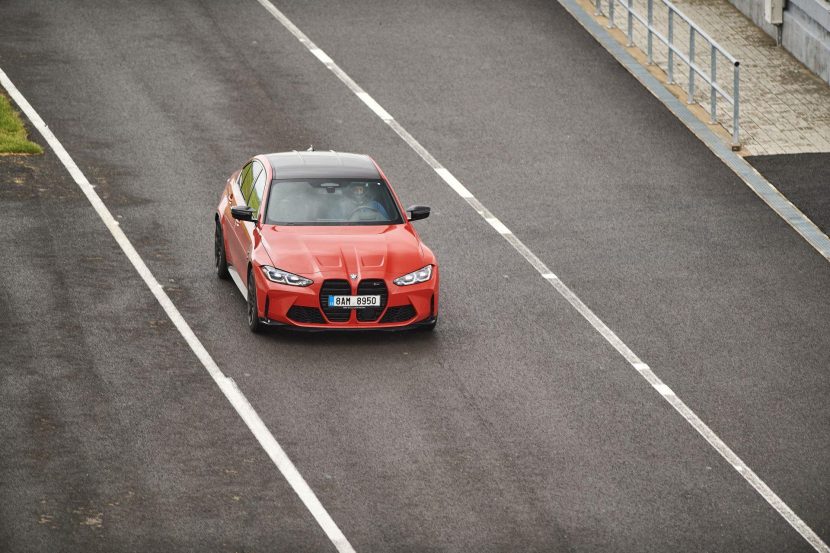
And even so, once you leave the track and return to normal roads, other tradeoffs become noticeable as well. As much as the engineers struggled to make the car more comfortable, it’s still rather stiff for normal back roads. The suspension is, after all, bolted on the chassis and there’s a lot of drone sounds and vibrations making their way into the cabin at all sorts of speeds. The double-glazed windows cut the wind noise, but there’s still plenty to hear inside the cabin of an M3 Competition.
Fun, Fun And More Fun
Is it, then, a proper M car? Absolutely. With all the downsides of driving such a model on public roads every day, I still arrived at my destination after driving 600 kilometers through the Carpathian Mountains in one day with a stupid grin on my face. I was tired but could go on for another couple of hours, with a thirst of more that went simply unquenched.
[Photos: Ciprian Mihai | Radu Chindris]


